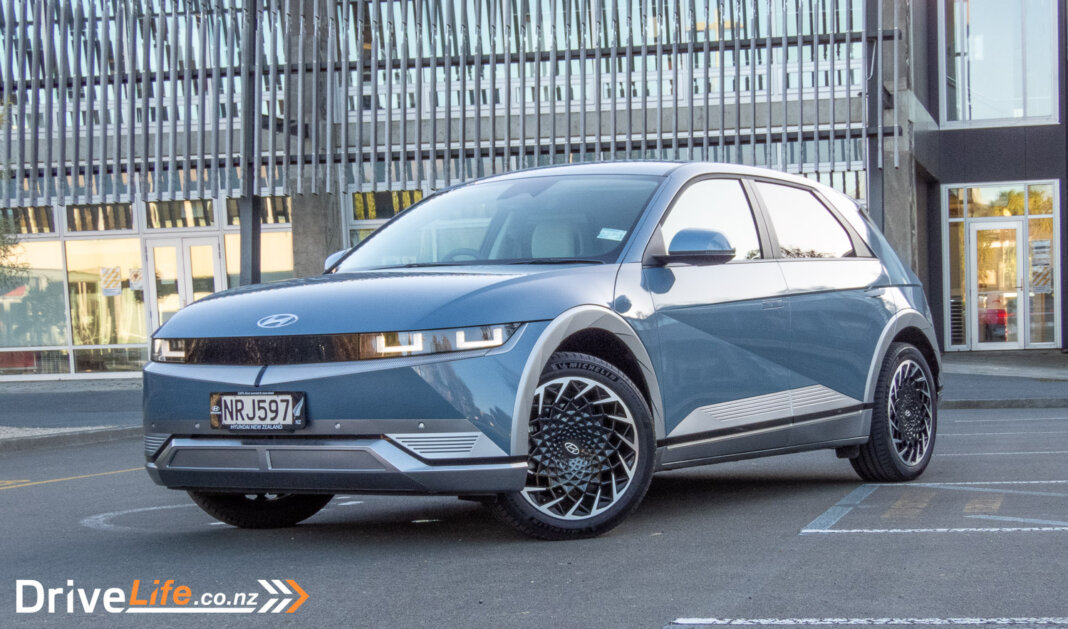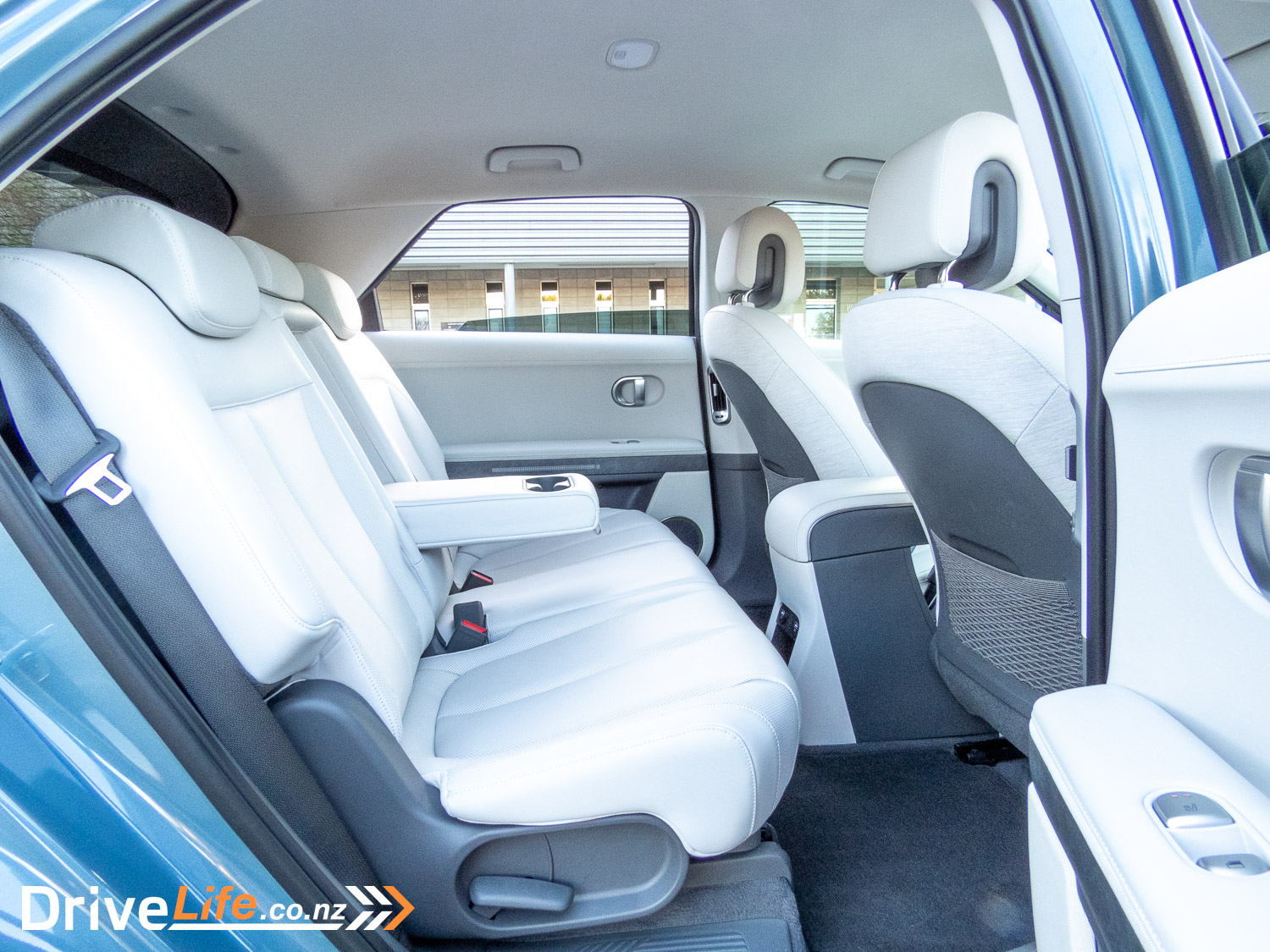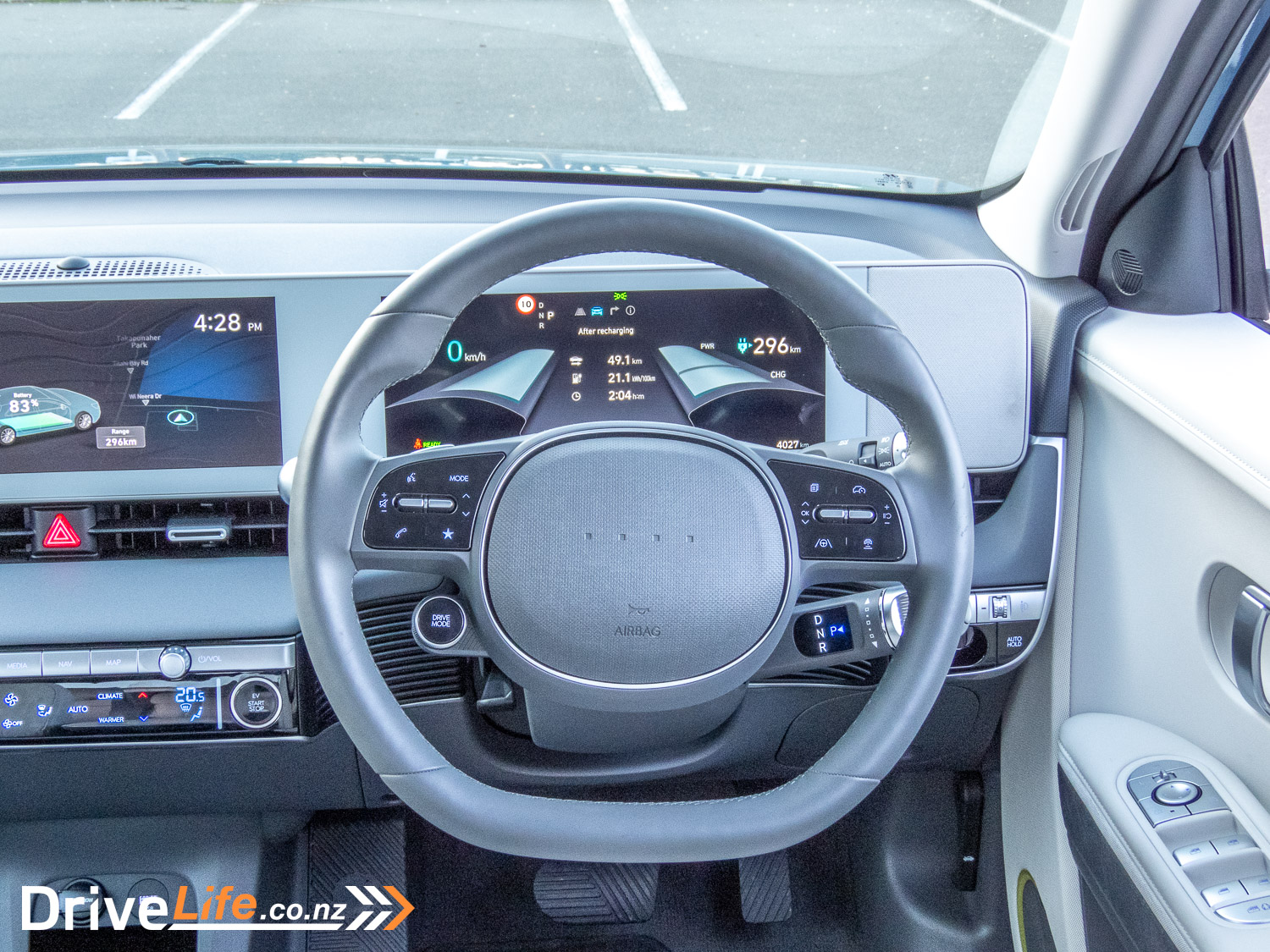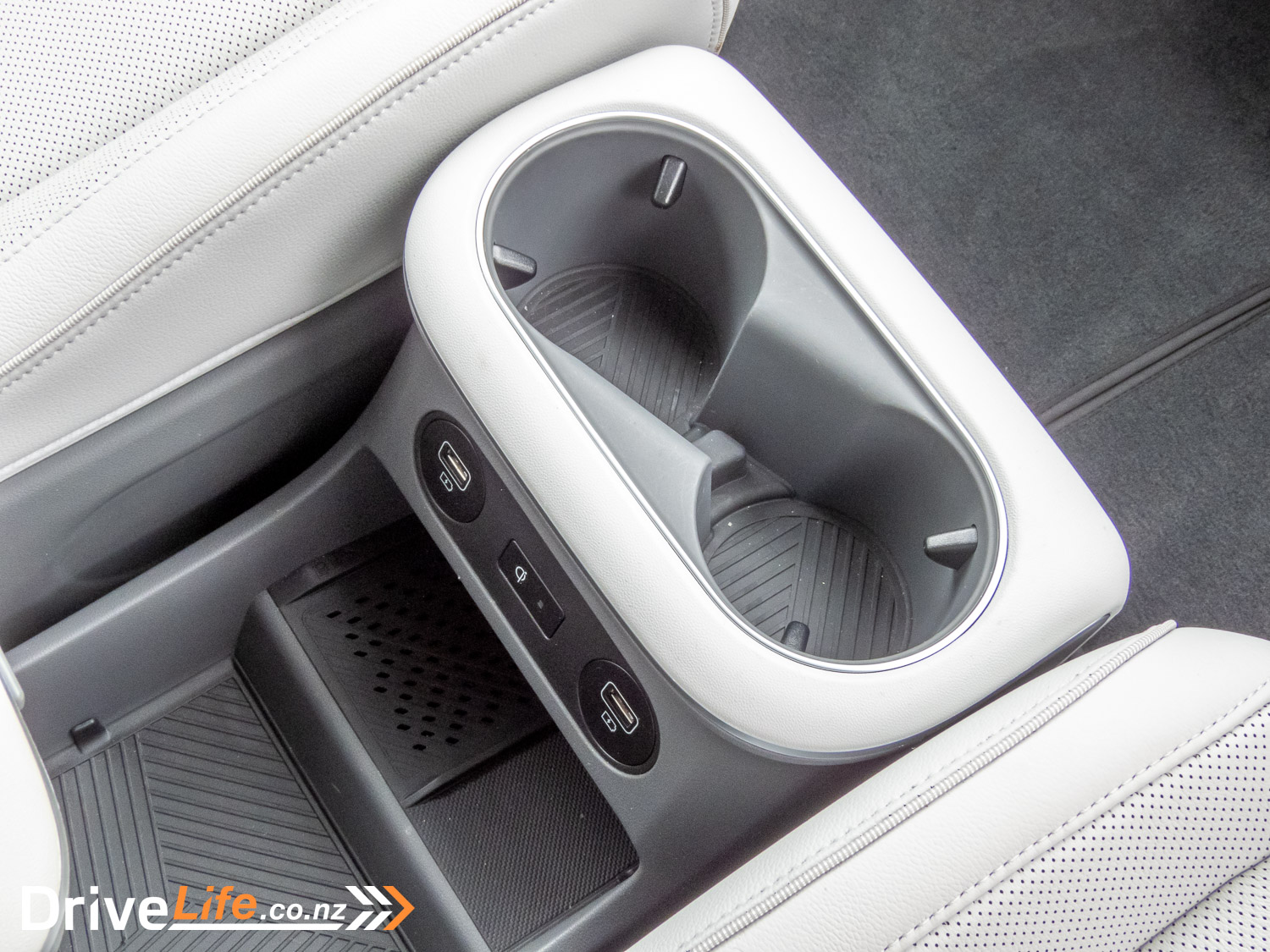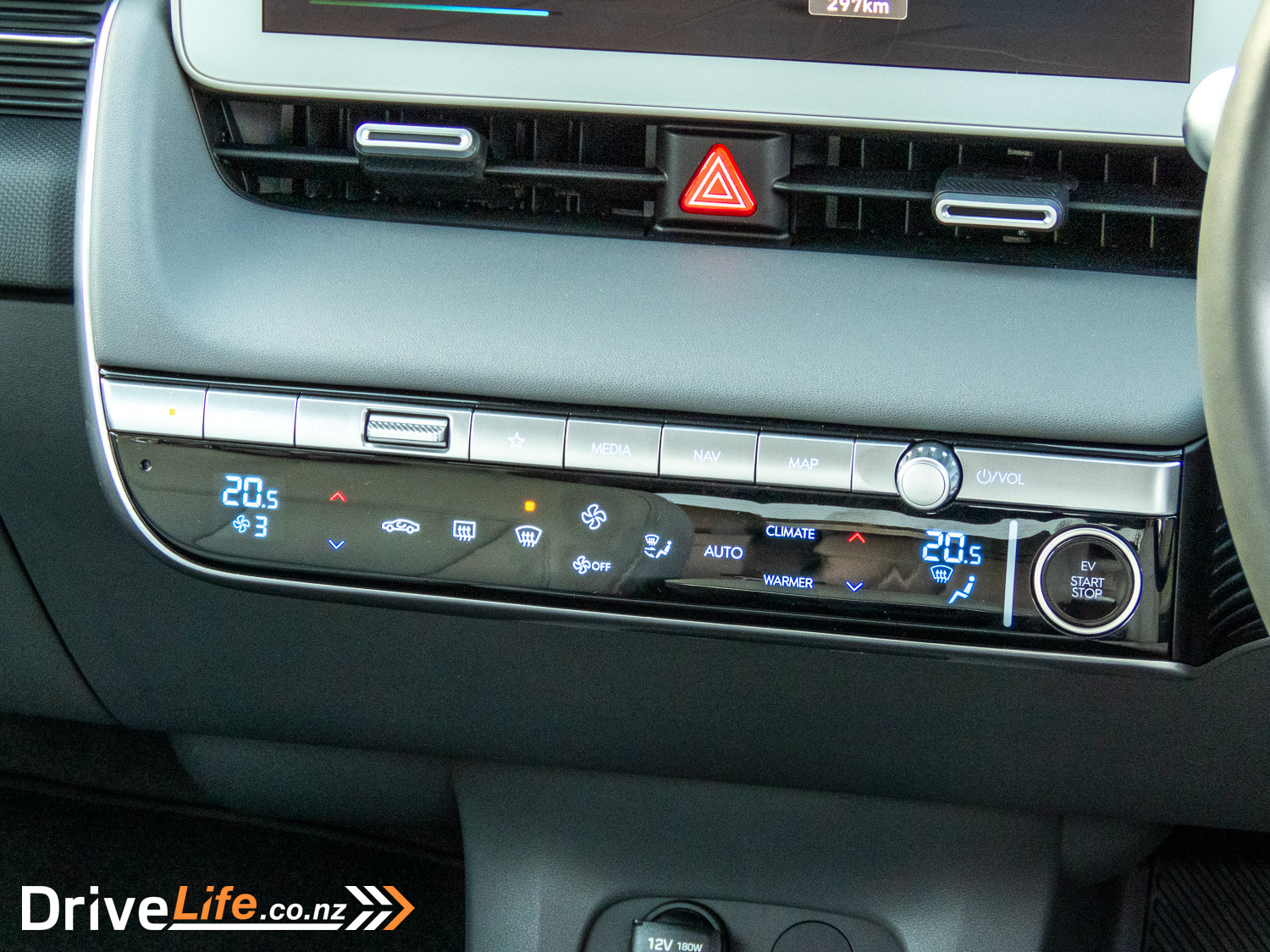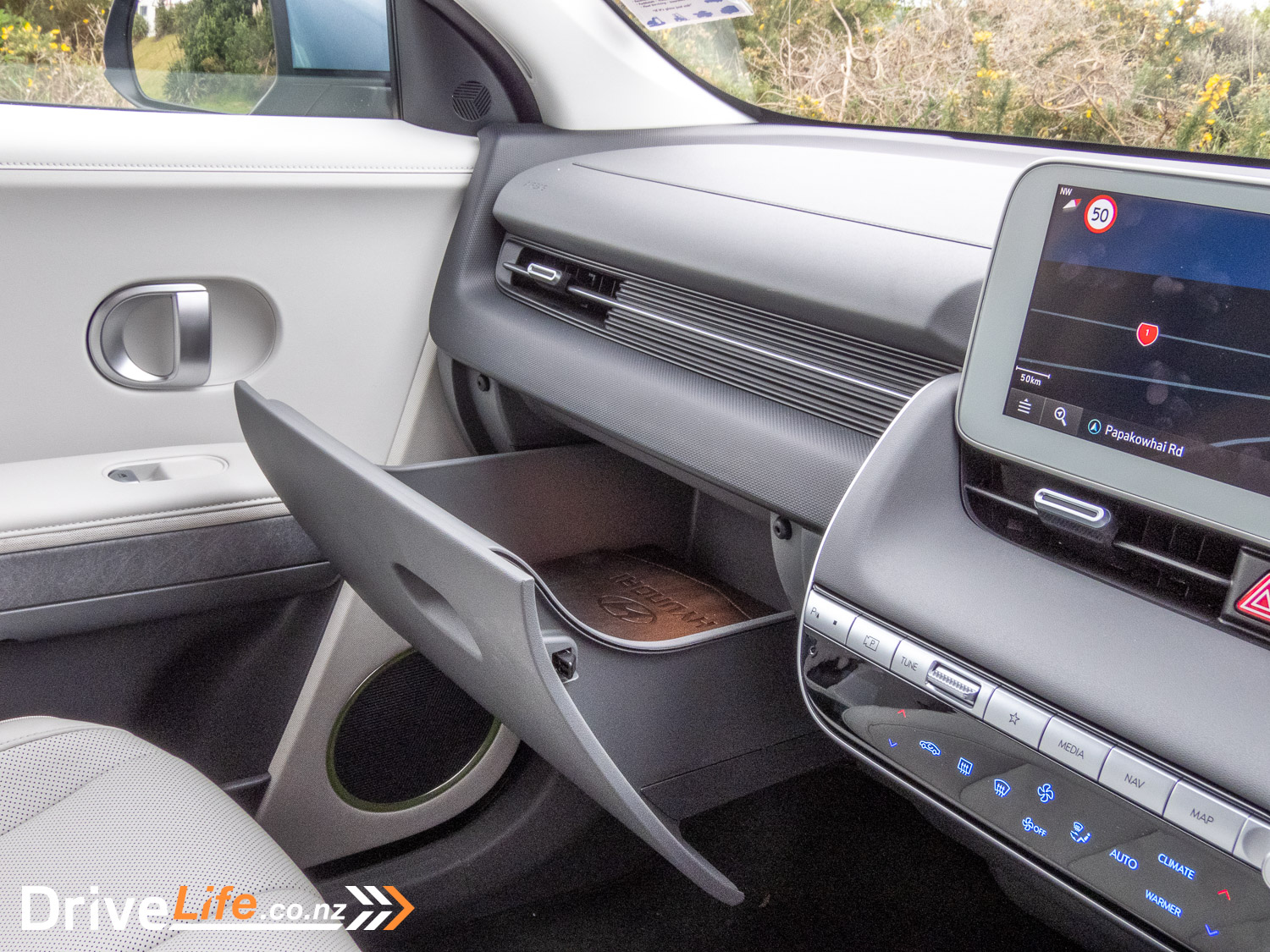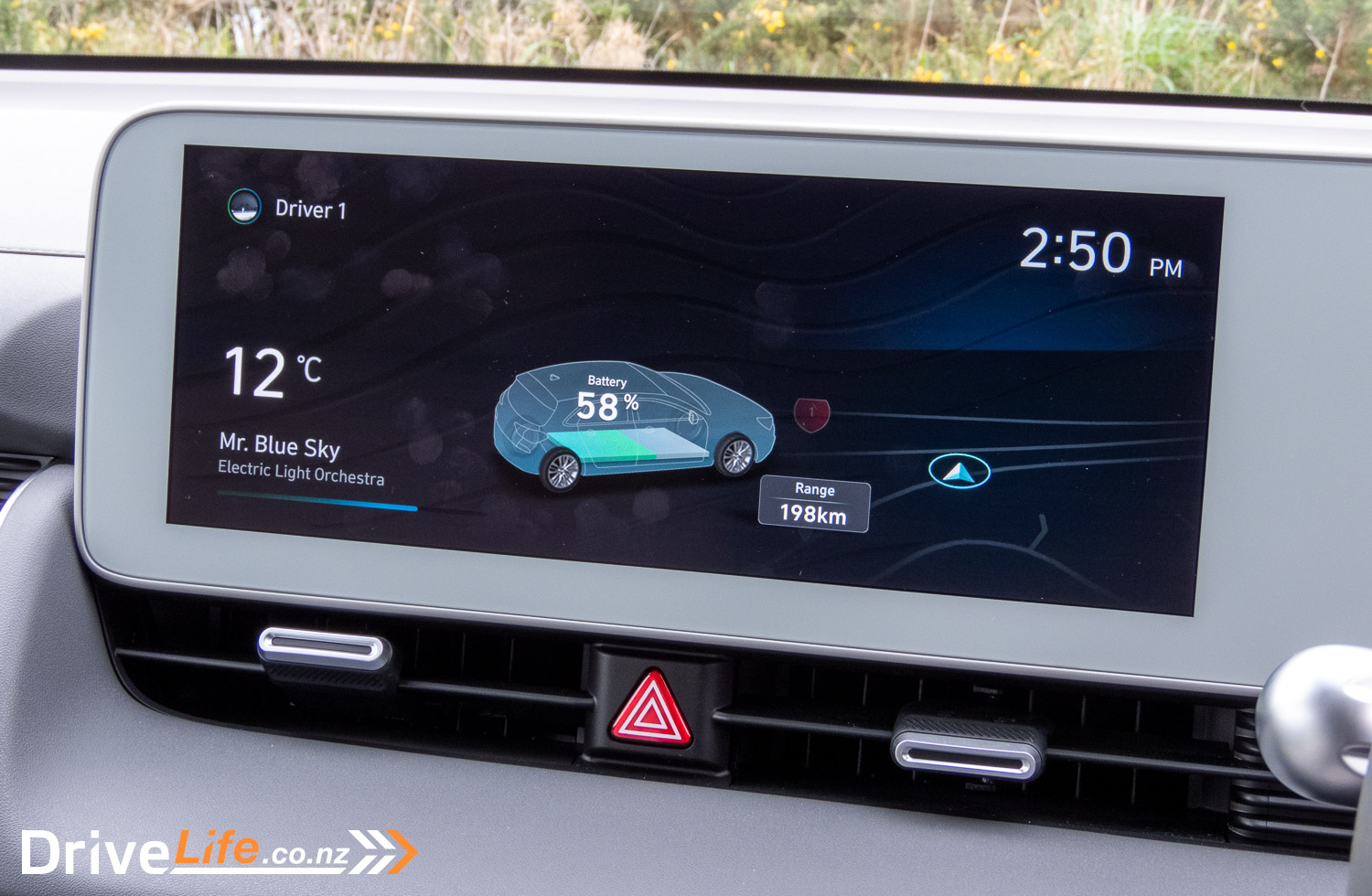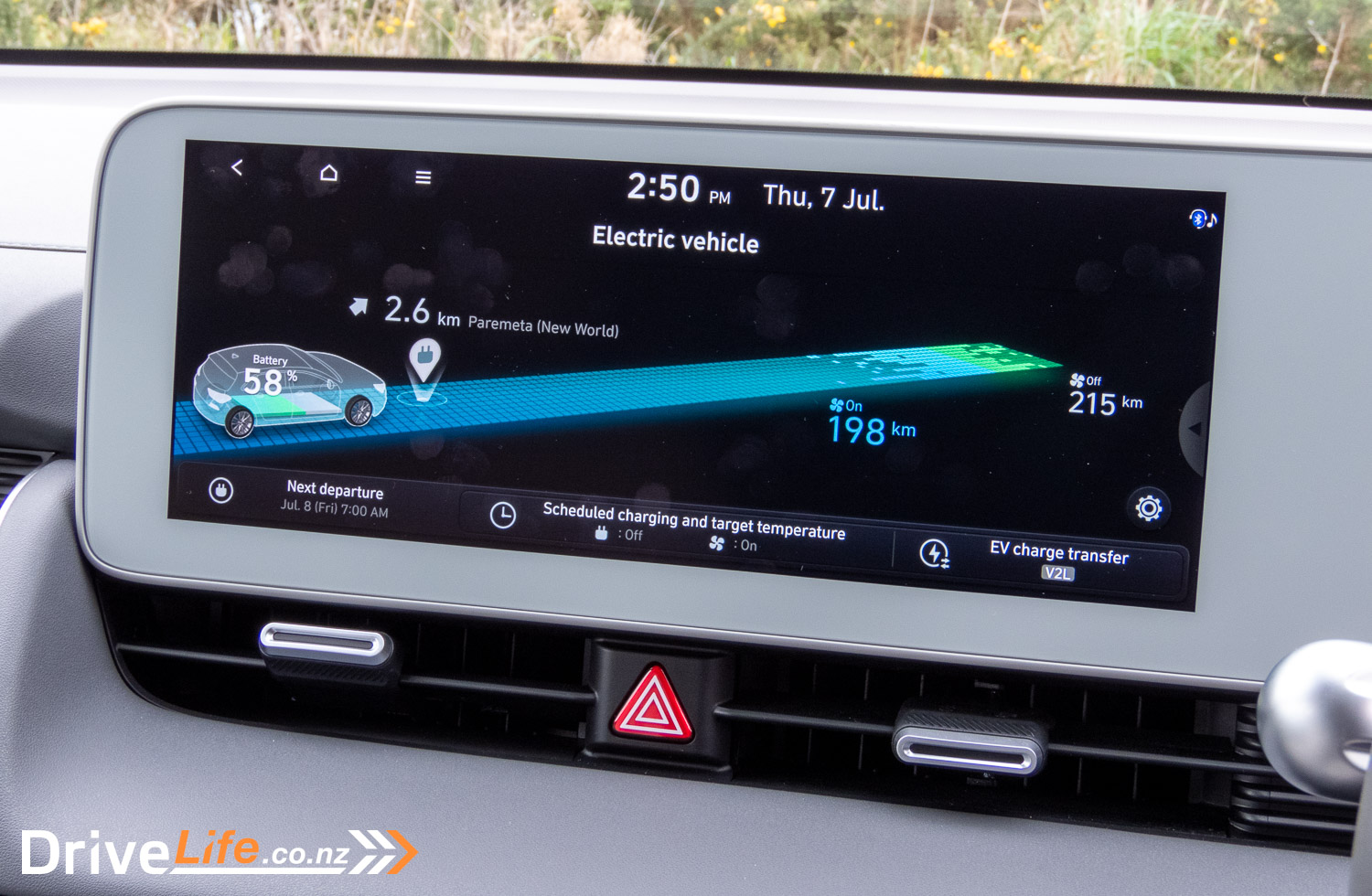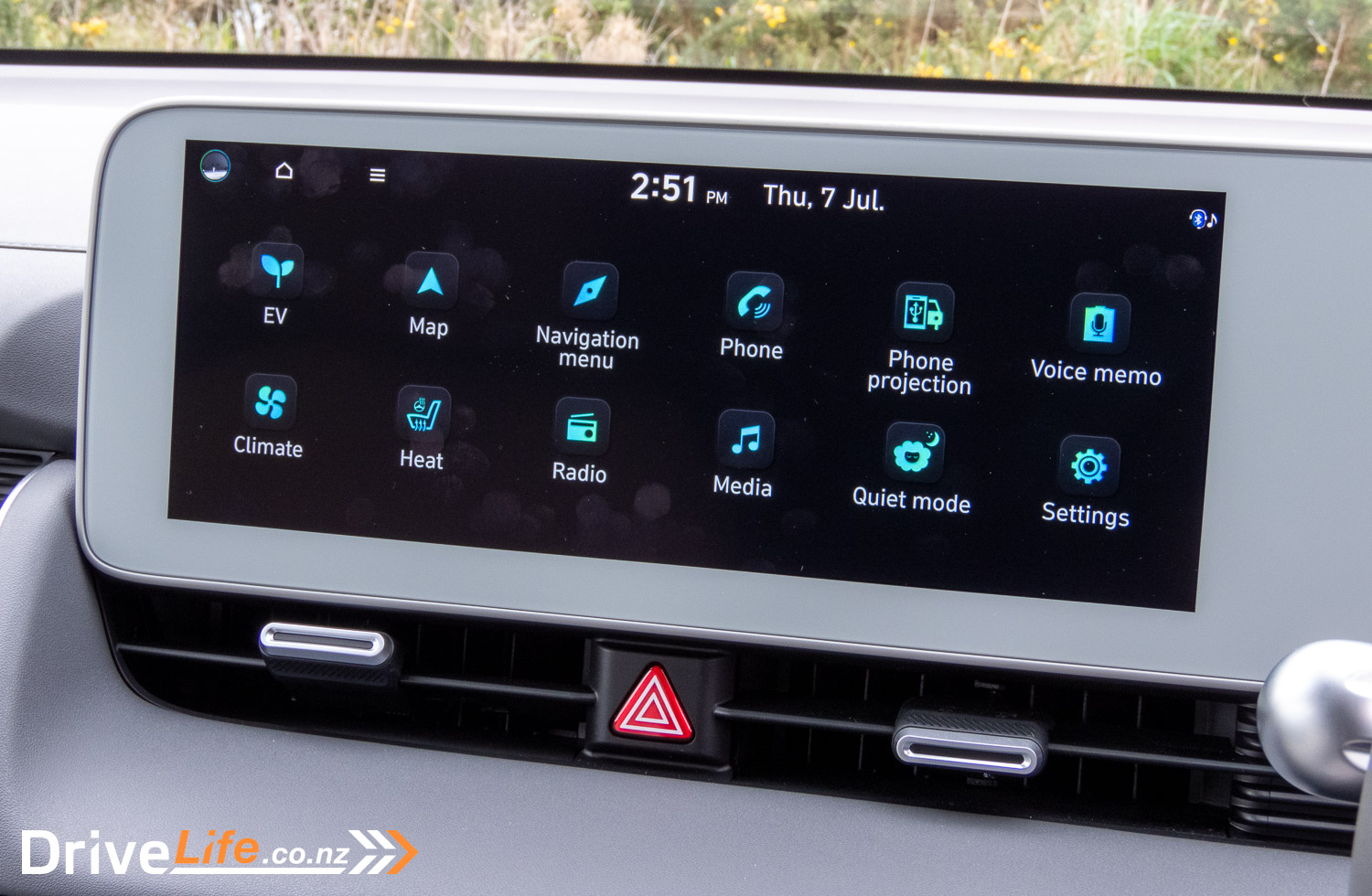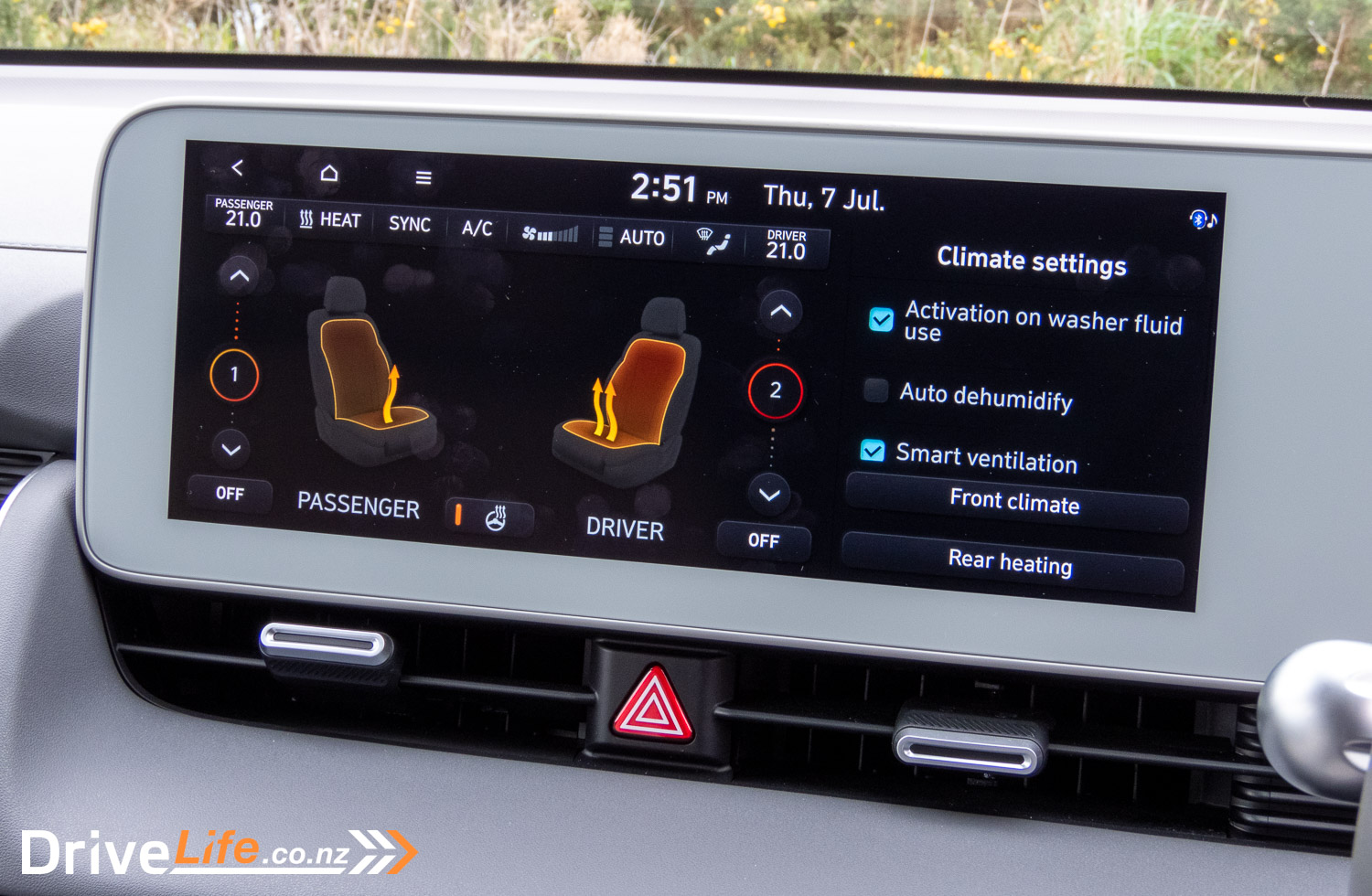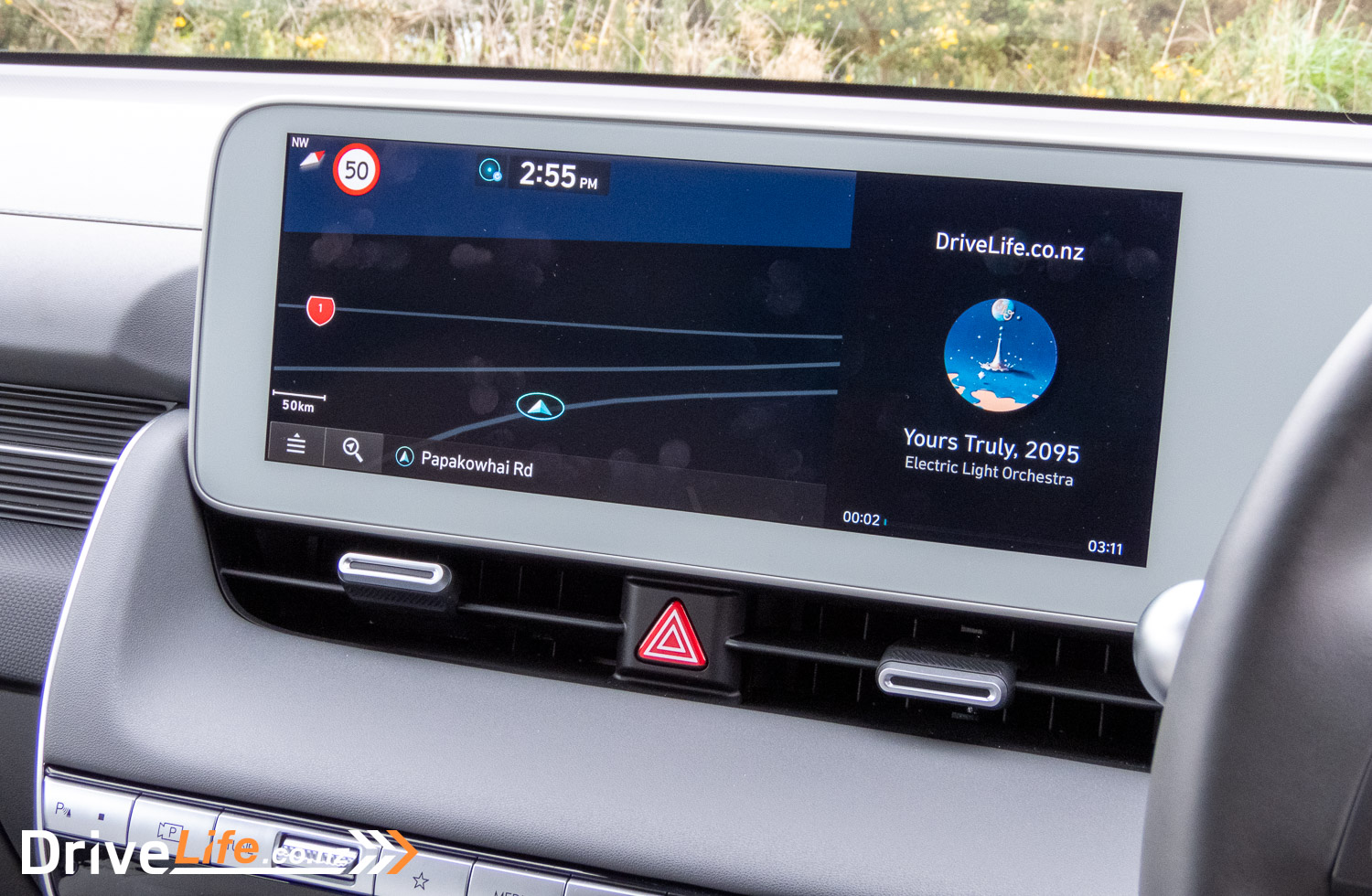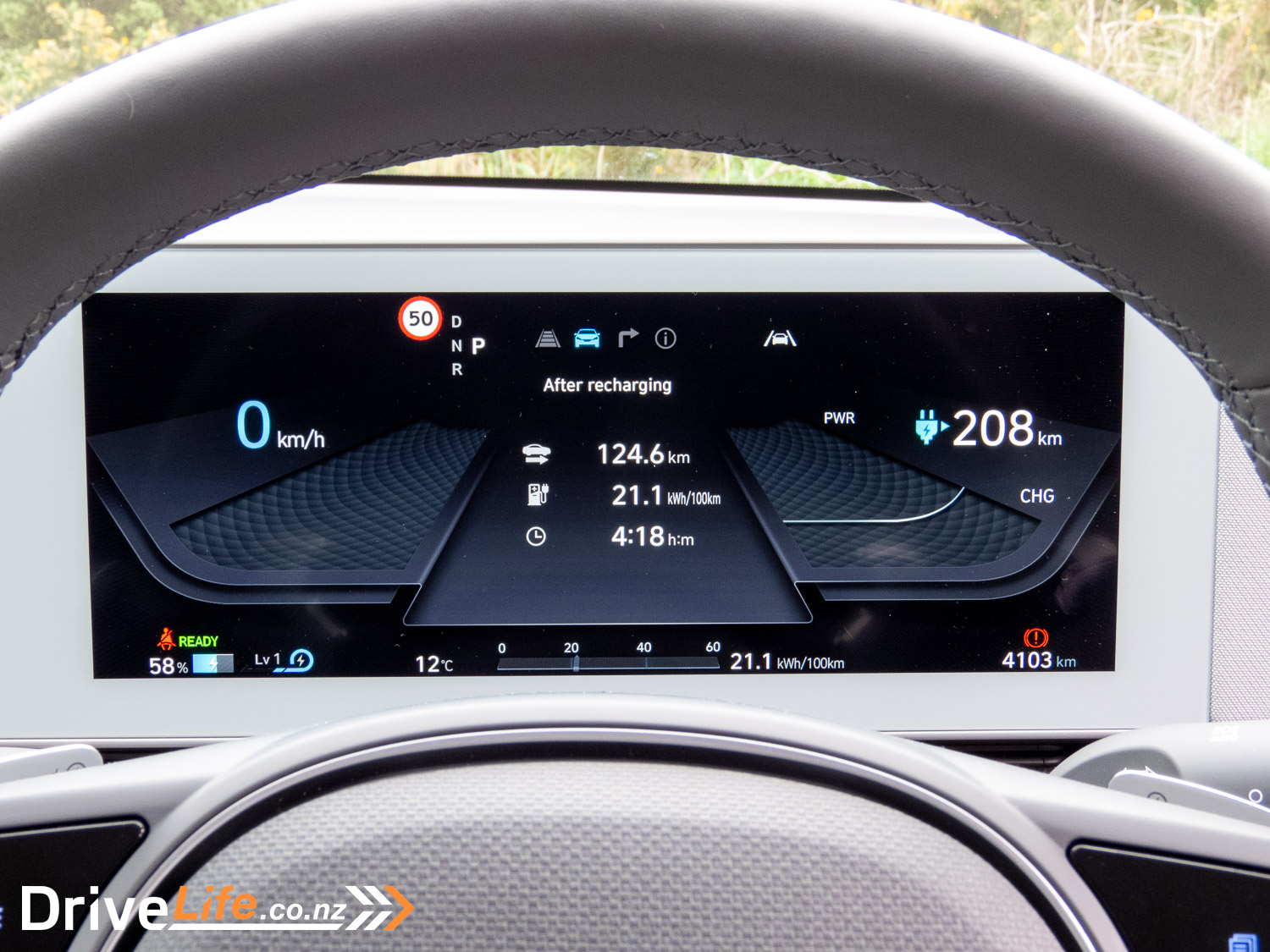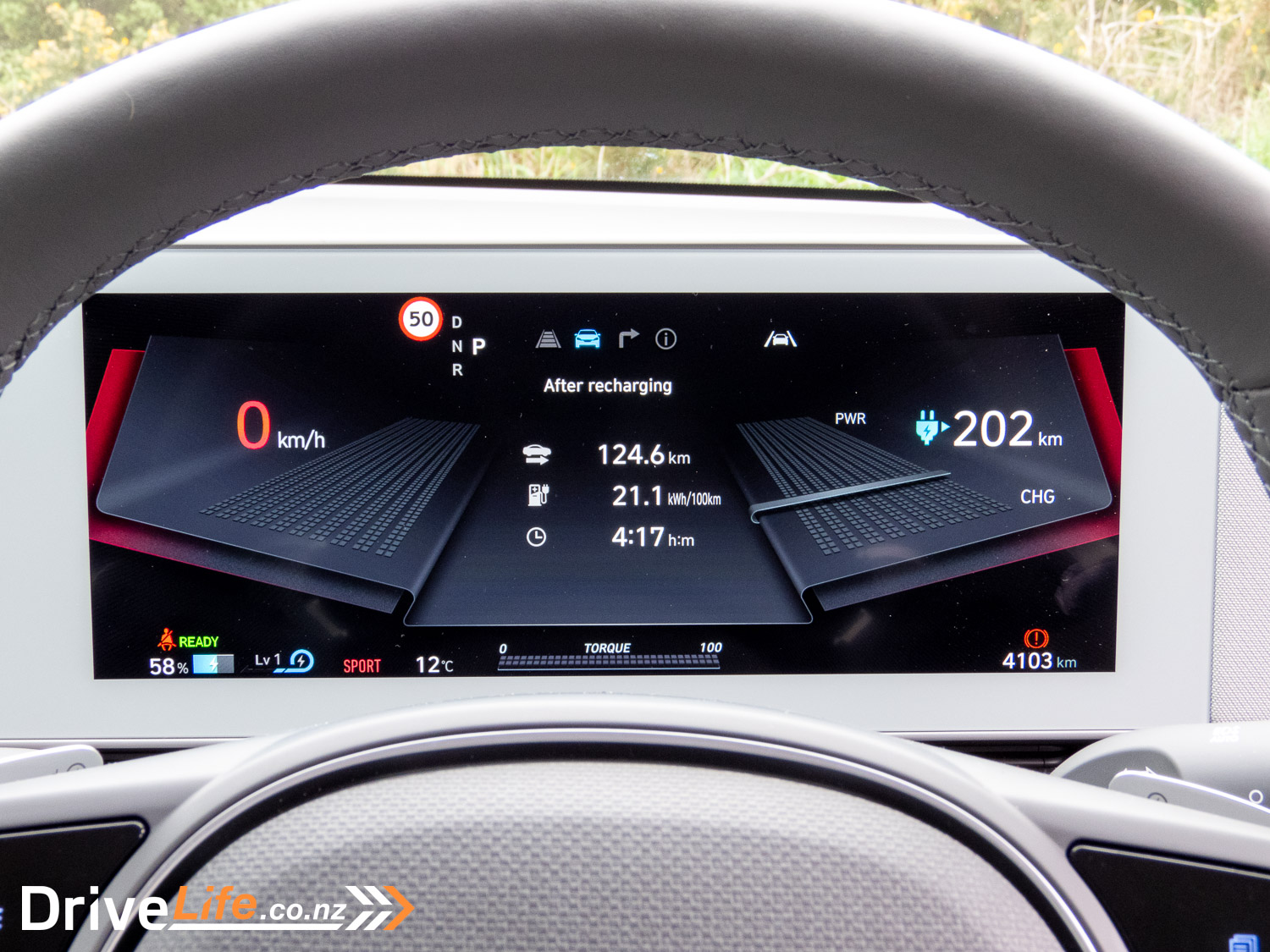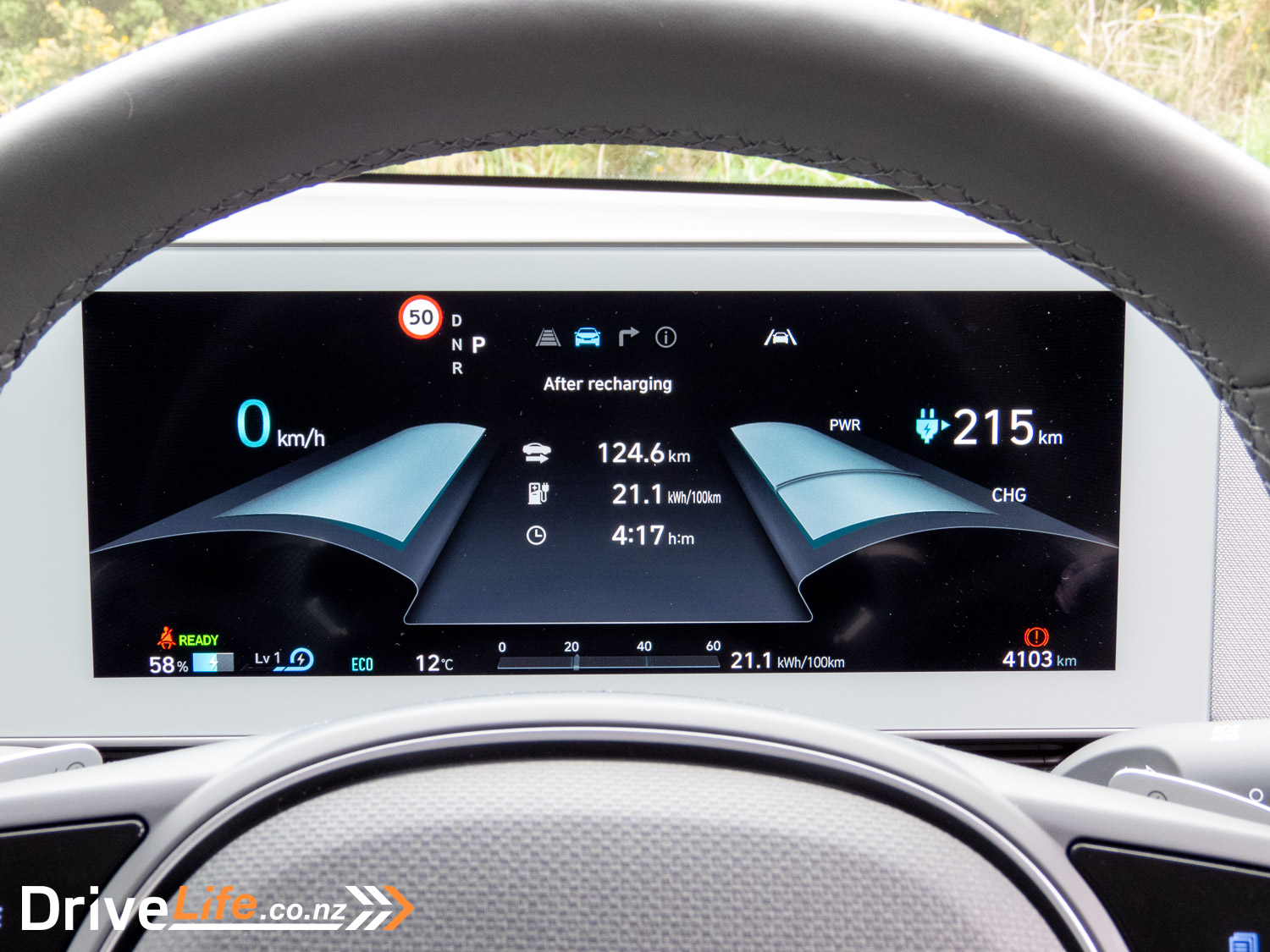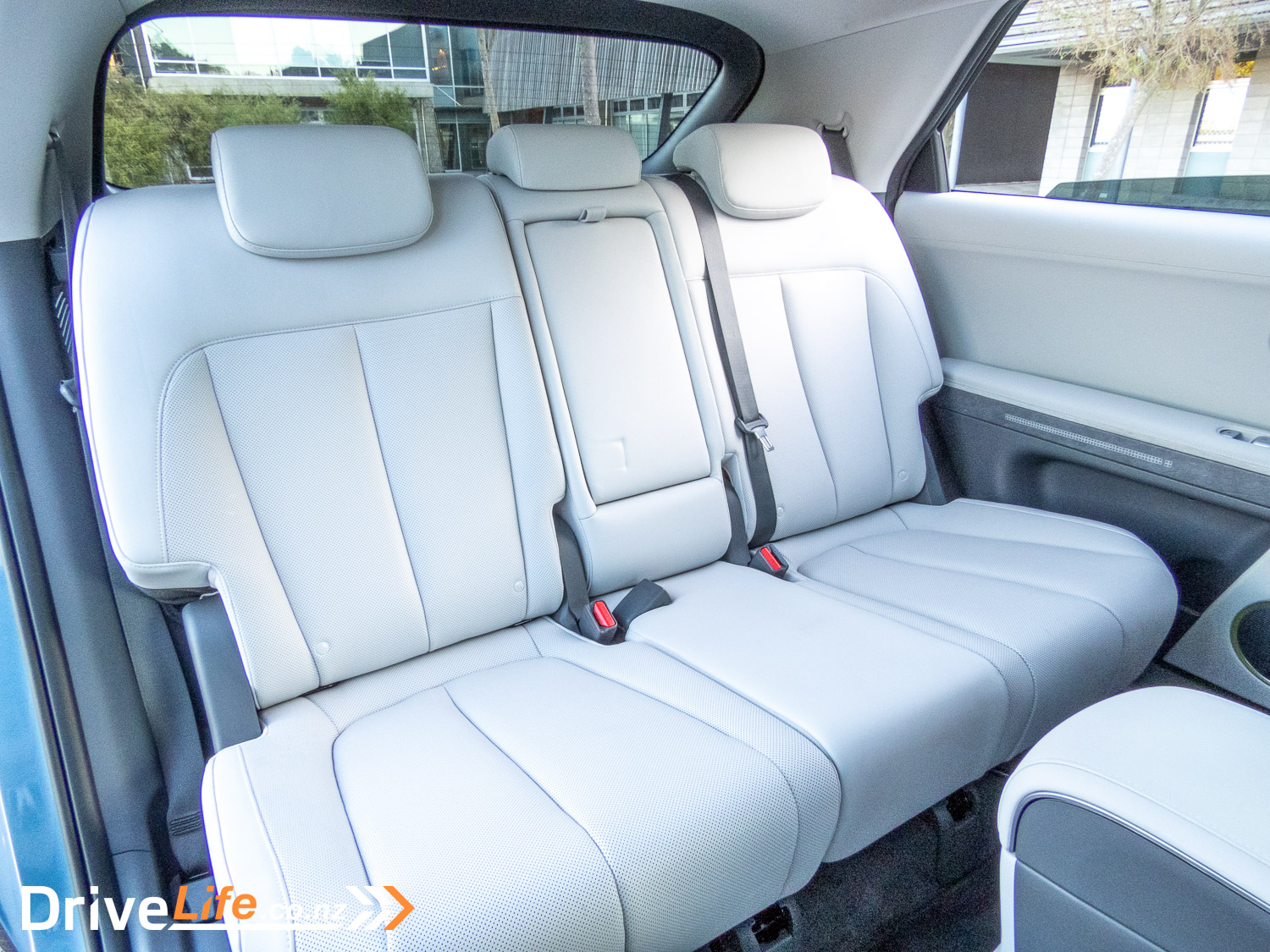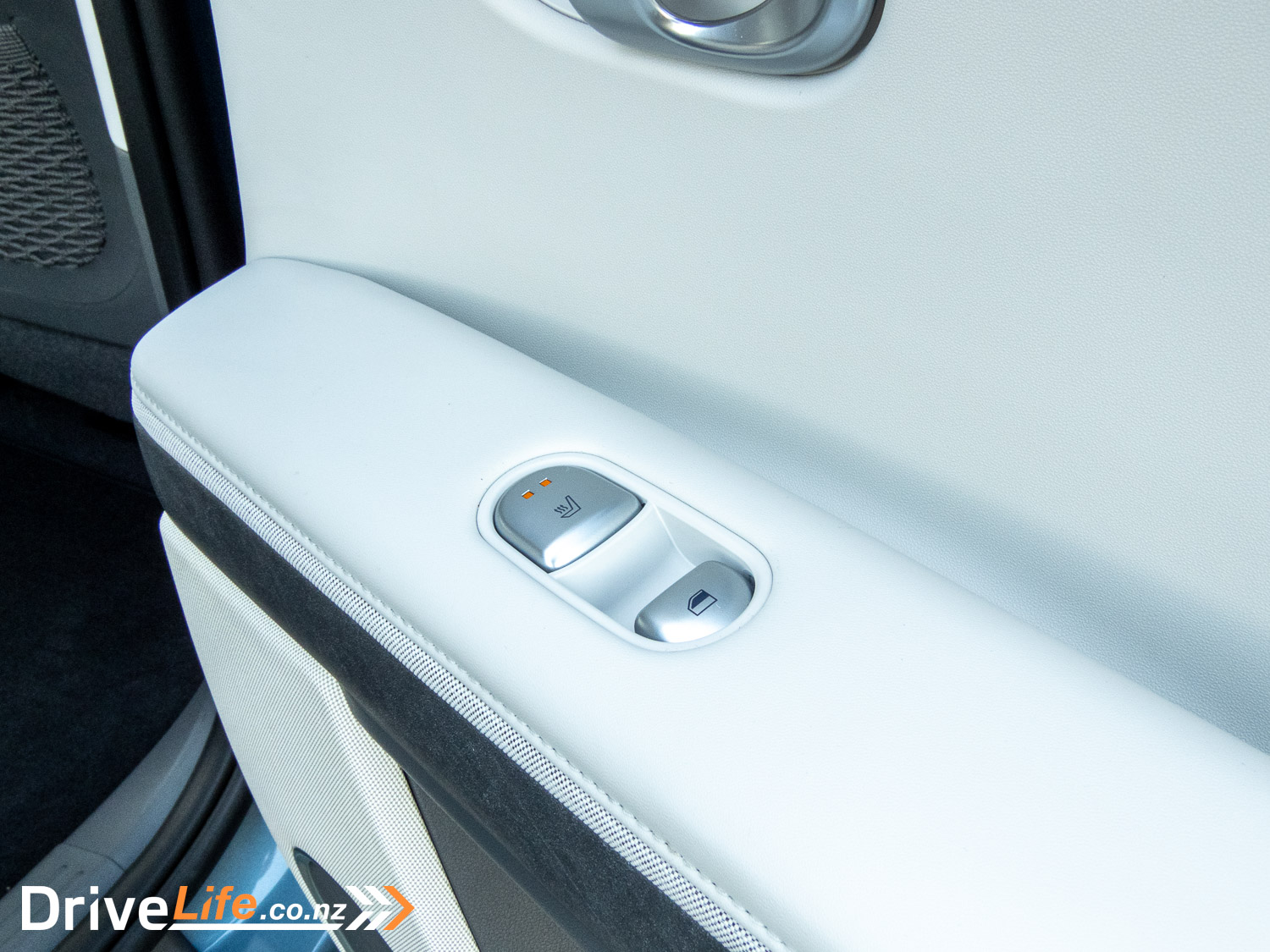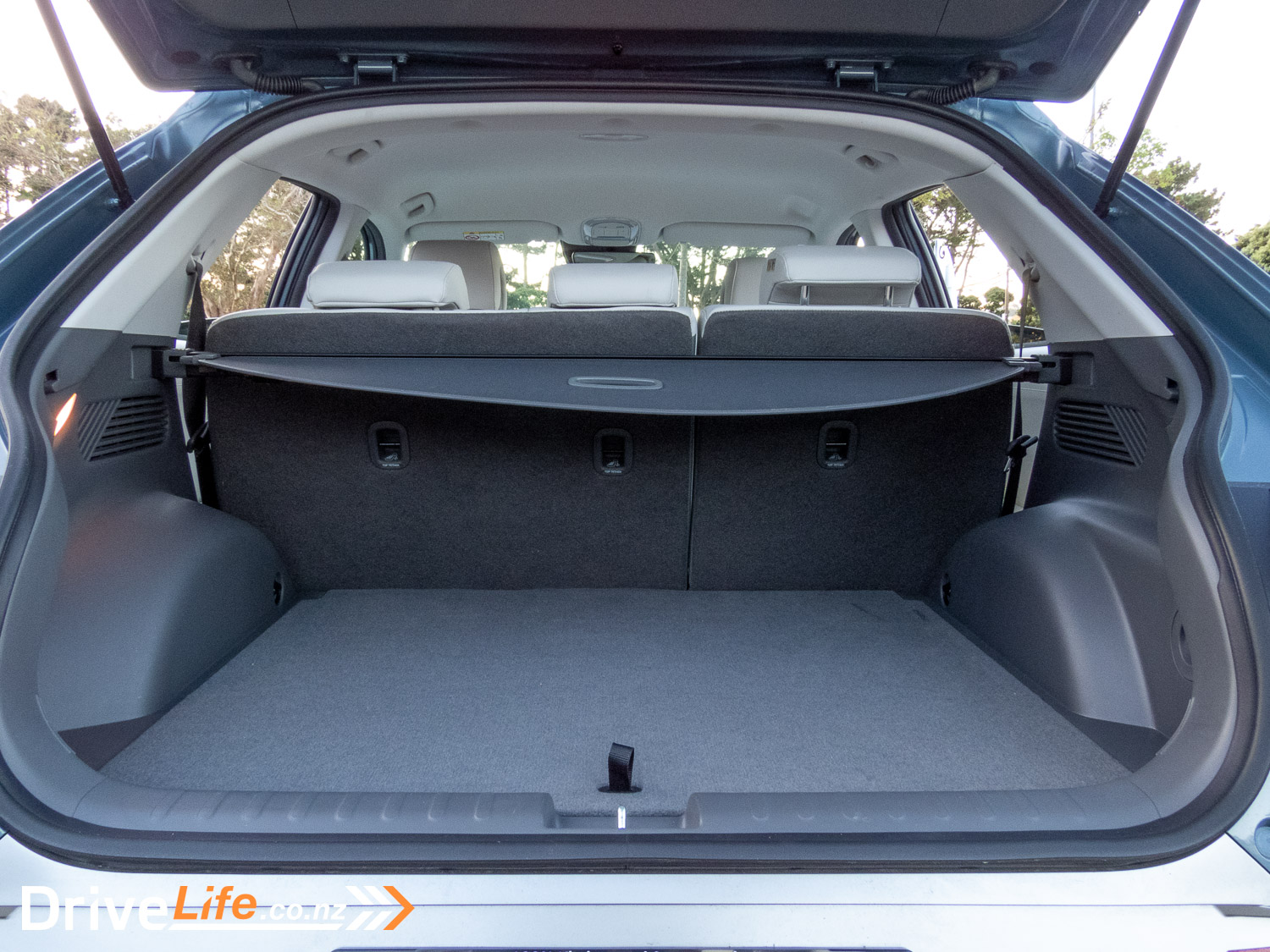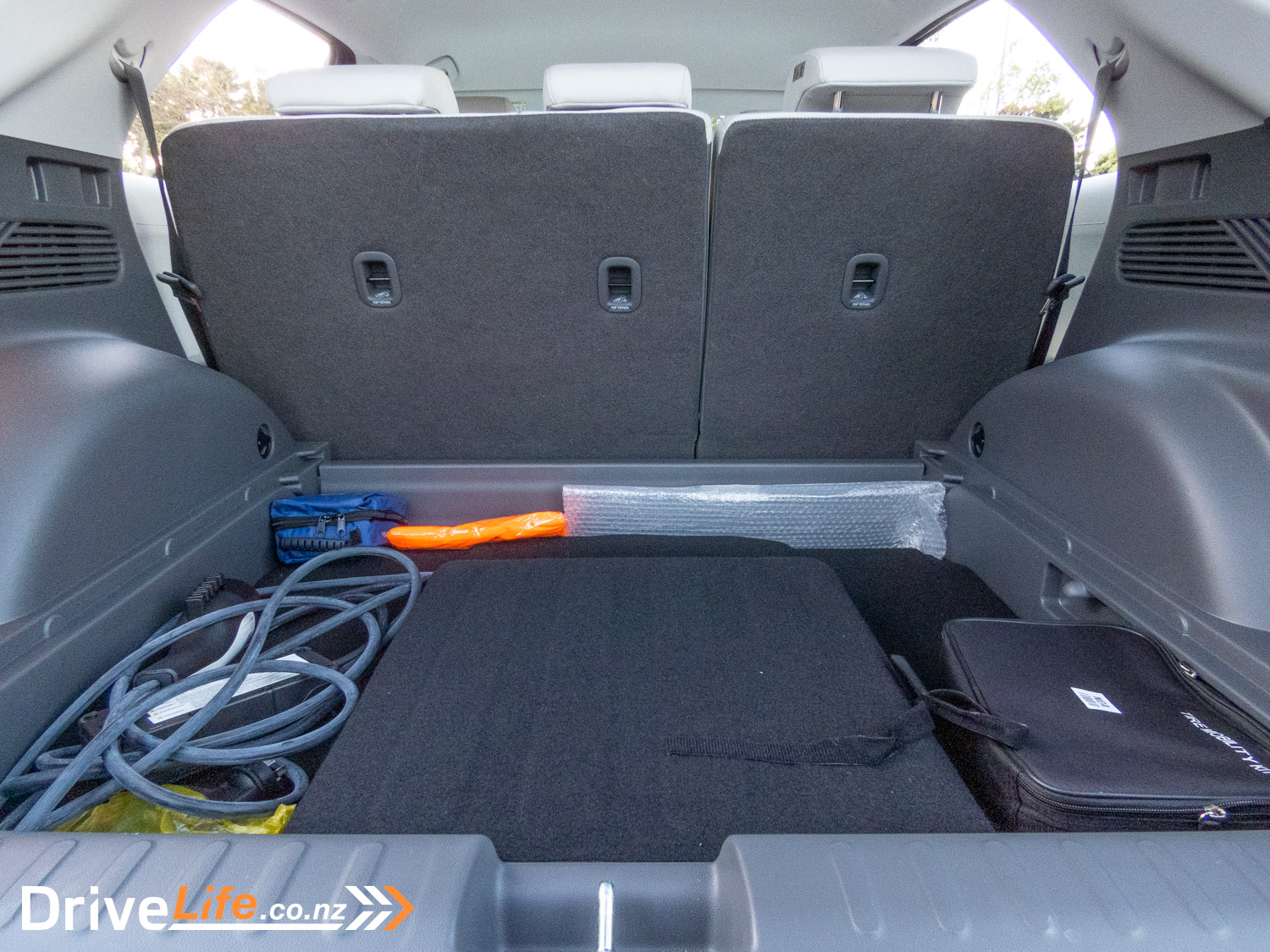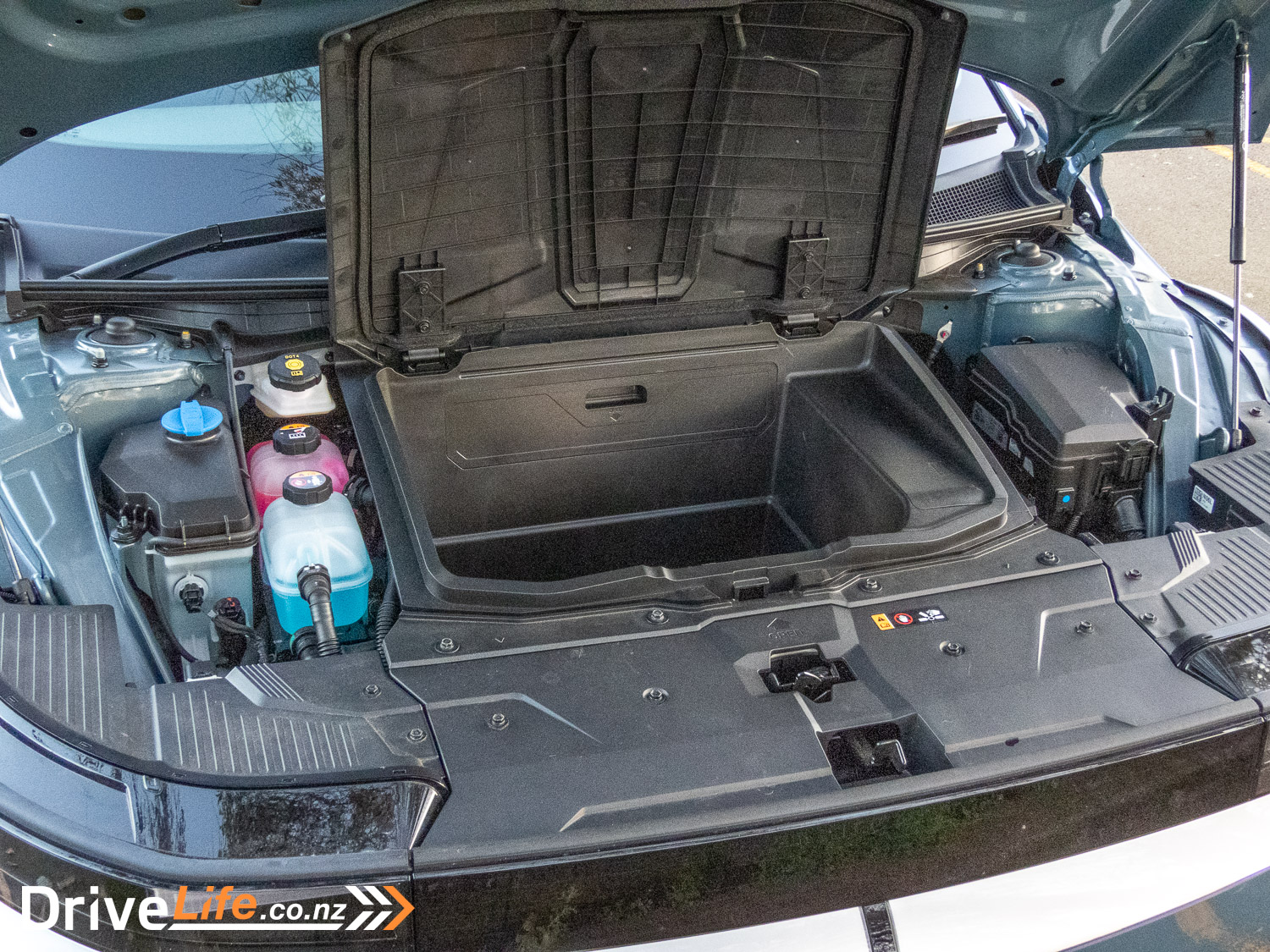Since arriving on the scene a little over a year ago, the Hyundai Ioniq 5 has made waves internationally.
The reception was unsurprising. On paper, the Ioniq 5 is amazing. It’s an all-new ultra-high-tech electric SUV, with retro-throwback styling. The automotive press hadn’t seen anything like it before, particularly at the level of the average consumer.
In little over a year, the Ioniq 5 has accumulated several awards. New Zealand’s automotive fraternity certainly loved it, awarding it New Zealand Car of the Year (COTY) in 2021.
On the other hand, my reception was perhaps slightly more tepid after experiencing the Ioniq 5 for the last year. I expected to be blown away like everyone else, but I was left feeling somewhat ambivalent.
Will the Ioniq 5 convince me otherwise this time around? We shall see.
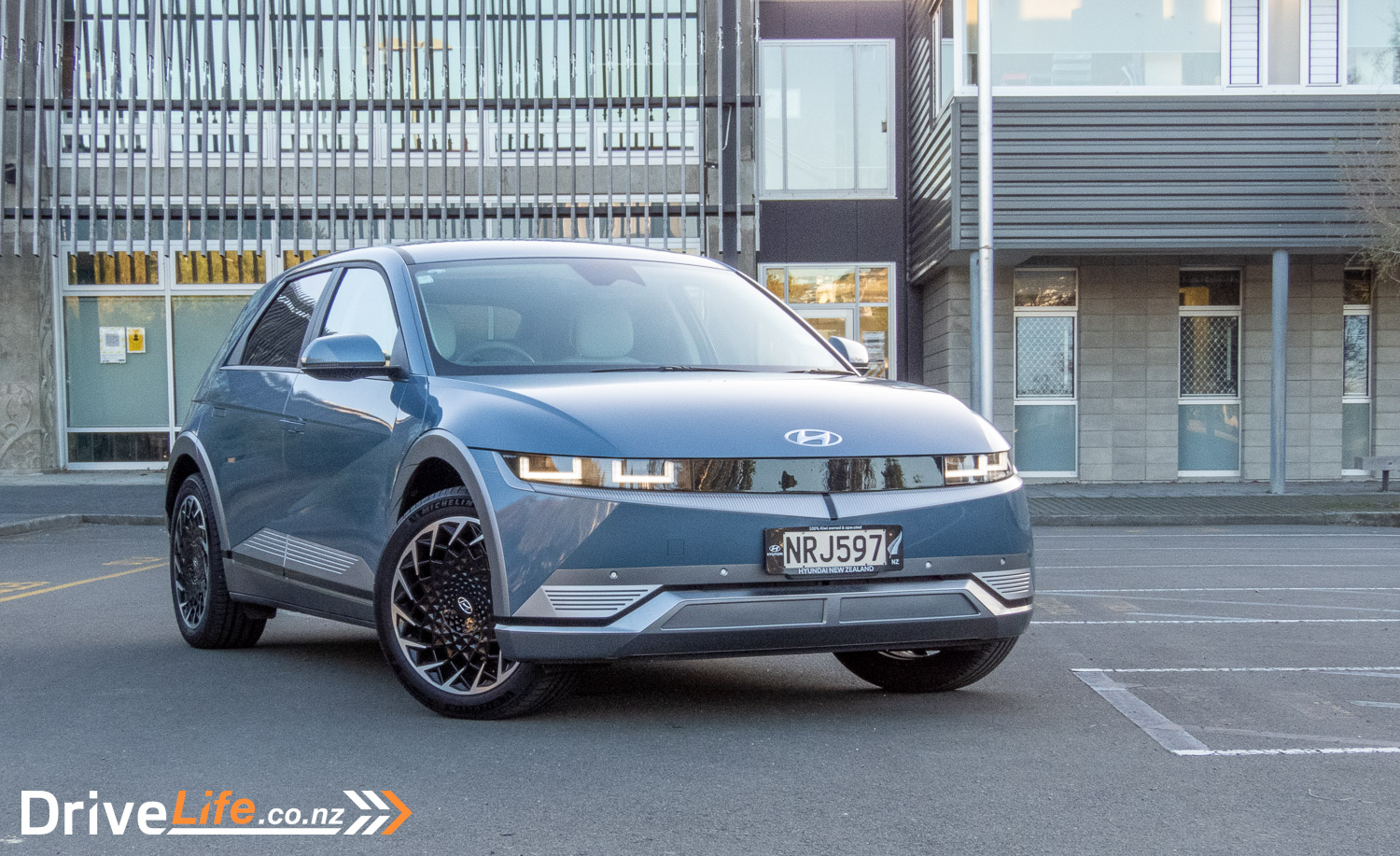
What We Like and Dislike About The 2022 Hyundai Ioniq 5 Elite
| What we like | What we don’t like |
| Interior quality Cabin space Ride quality Minimal cabin noise Technology Okay, the looks are quite cool | Vehicle width Audio default setting Some awkward interior storage |
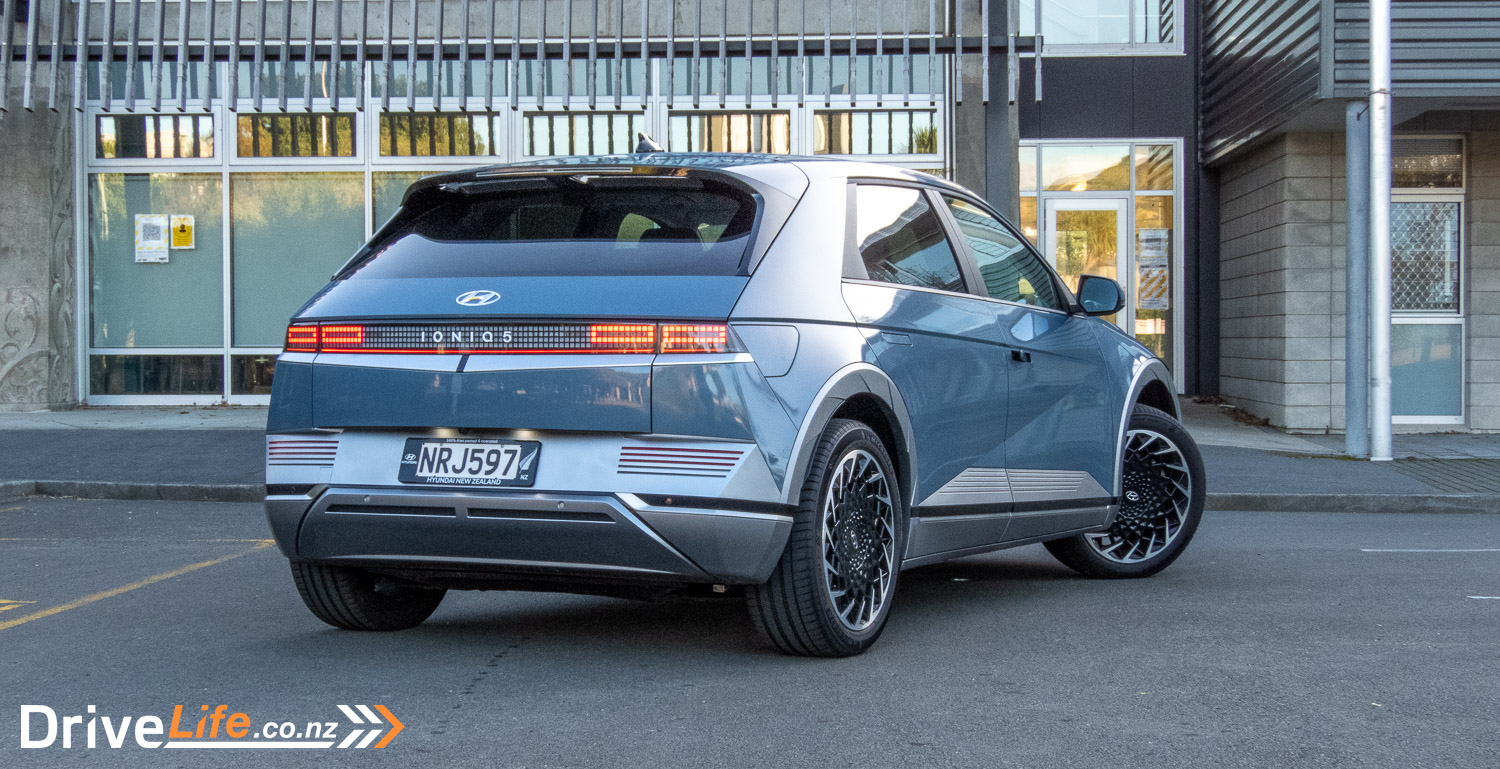
What’s In The 2022 Hyundai Ioniq 5 range?
There are five different models of the Ioniq 5 available for Kiwi buyers. Between those five models are three different battery types, and two different drivetrain types. Your choices are either a 58kWh, 72kWh or 77.4kWh battery, and either a single-motor rear-wheel drive (RWD) or a twin-motor all-wheel drive (AWD) layout. The combinations vary with the spec level.
These options are priced below:
| Model | Type | Price |
| Ioniq 5 58kWh | RWD | $79,990** |
| Ioniq 5 72kWh | RWD | $83,990 |
| Ioniq 5 72kWh | AWD | $97,990 |
| Ioniq 5 Elite 72kWh | RWD | $96,990 |
| Ioniq 5 Limited 72kWh | AWD | $117,990 |
Only the base model 58kWh RWD Ioniq 5 will get you a clean car rebate, being the only one with a starting price under $80,000.
The base model with the smaller battery has a 125kW electric motor that puts out 350Nm of torque, while the 72kWh models have a 160kW electric motor with the same torque output. AWD models add an electric motor at the front axle, adding a further 70kW/255Nm to the overall output.As for range, a 58kWh battery will give you a claimed range of around 384kms, while the 72kWh or 77.4kWh batteries give you a claimed range between 454kms and 481kms.
2022 Hyundai Ioniq 5 Standard Equipment Highlights
- 12.3” touchscreen audio system
- 12.3” colour driver’s display
- Apple CarPlay and Android Auto
- SatNav
- Dual-zone AC
- Tyre pressure monitoring
- Electrically folding and heated mirrors
- Pixel-type LED headlights
- Daytime running lights
- LED taillights
- Solar UV protection glass
- Leather steering wheel
- 8-way electric driver’s seat
- Wireless phone charging
- Interior mood lighting
- Keyless entry and start
- Hyundai Active Locking Operation (HALO) including speed sensing auto door locking
The Elite adds:
- Privacy glass to rear doors and tailgate
- Full leather interior
- An 8-way electric passenger’s seat
- Heated front seats
- Heated steering wheel
- Bose premium audio with 8 speakers
The Limited then adds:
- A Vision Roof with retractable blind
- Relaxation Mode for both front seats
- Memory settings for both front seats
- Ventilated front seats
- Electric rear sliding seats
Hyundai will also offer you a range of accessories with your Ioniq 5, including:
- Wall Box Pulsar Plus 7.4kW Type 2 home charger – $2,242.50
- Roof racks – $565
- Towbar – $1,650
- Vehicle to Load (V2L) adaptor – $920
- Floor mats – $270
You get to choose from nine colours for your Ioniq 5. They’re all fair subdued options, being five variations of silver/grey, a pale green, a pale blue, white and black.
For more information on the Hyundai Ioniq 5, check out the Hyundai New Zealand website.
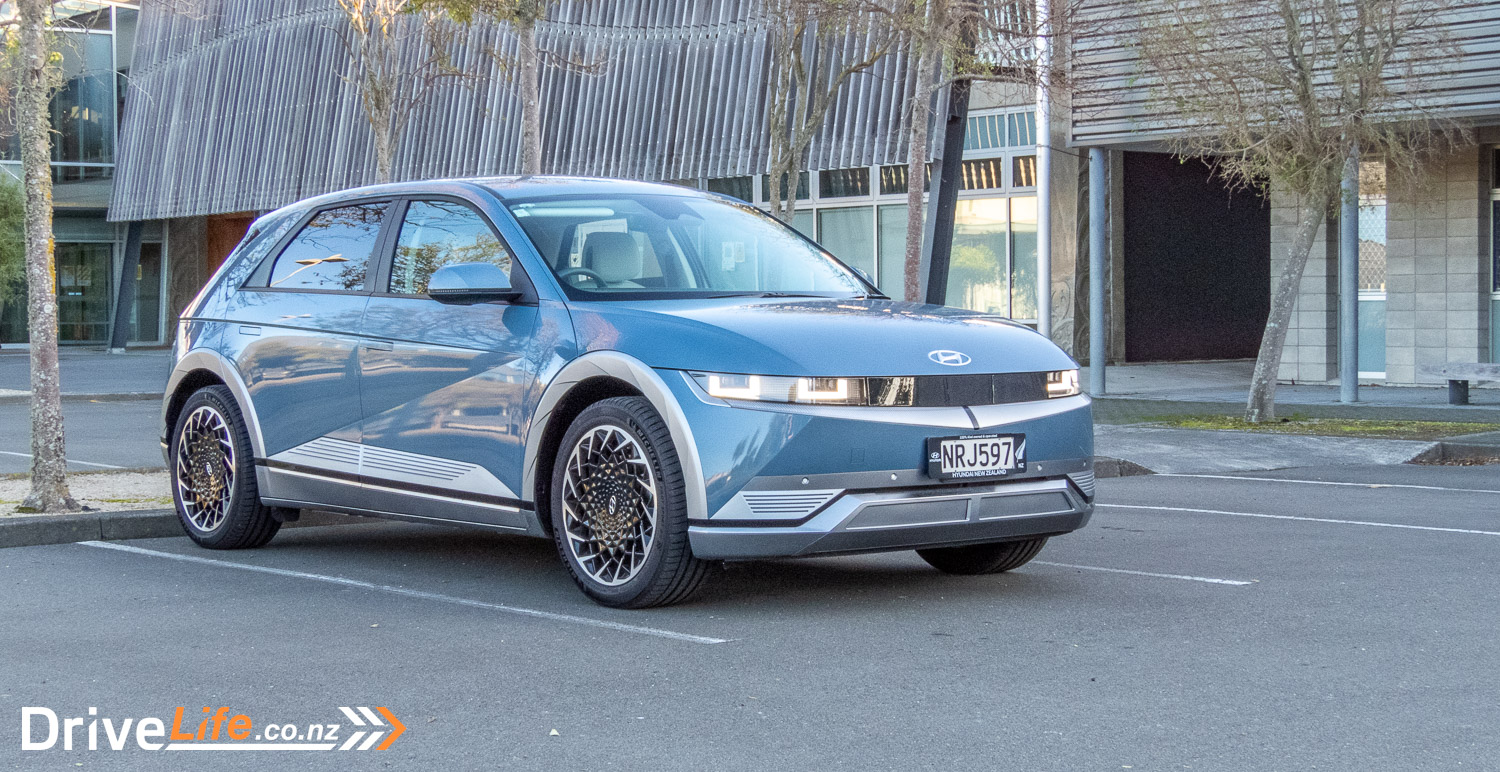
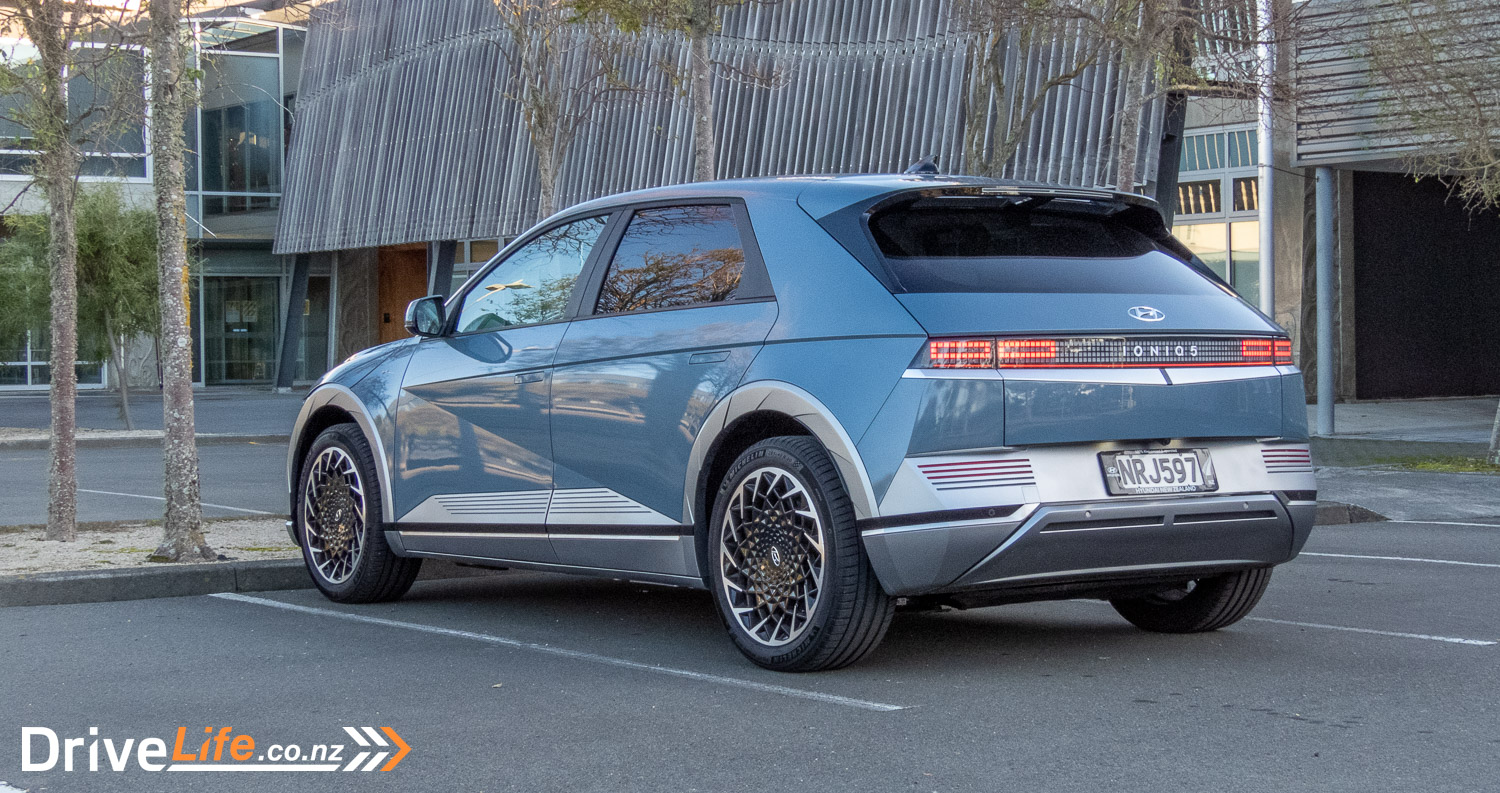
How Does The 2022 Hyundai Ioniq 5 Elite Compare To Its Competition?
It’s a tad thin on the ground for direct competitors to the Ioniq 5. However, this table is due to expand with the imminent arrival of the Ford Mustang Mach-E and Volkswagen ID.4.
| Make/ Model | Battery kW/h | Power/Torque kW/Nm | 0-100km/h seconds | Range (WLTP) | Bootspace, litres | Price |
| Hyundai Ioniq 5 Elite AWD (SUV) | 72.6 | 160/350 | 8.5 | 430 | 537 | $96,990 |
| Tesla Model 3 Long Range AWD (sedan) | 75 | 258/510 | 4.4 | 602 | 561 | $91,200 |
| Mercedes-Benz EQA FWD (SUV) | 66.5 | 140/375 | 8.9 | 400 | 340 | $85,500 |
| Kia EV6 Air (SUV) | 77.4 | 168/350 | 7.3 | 528 | 490 | $78,990 |
| Tesla Model Y Standard (SUV) | 75 | 150/350 | 6.9 | 455 | 854 | $76,200 |
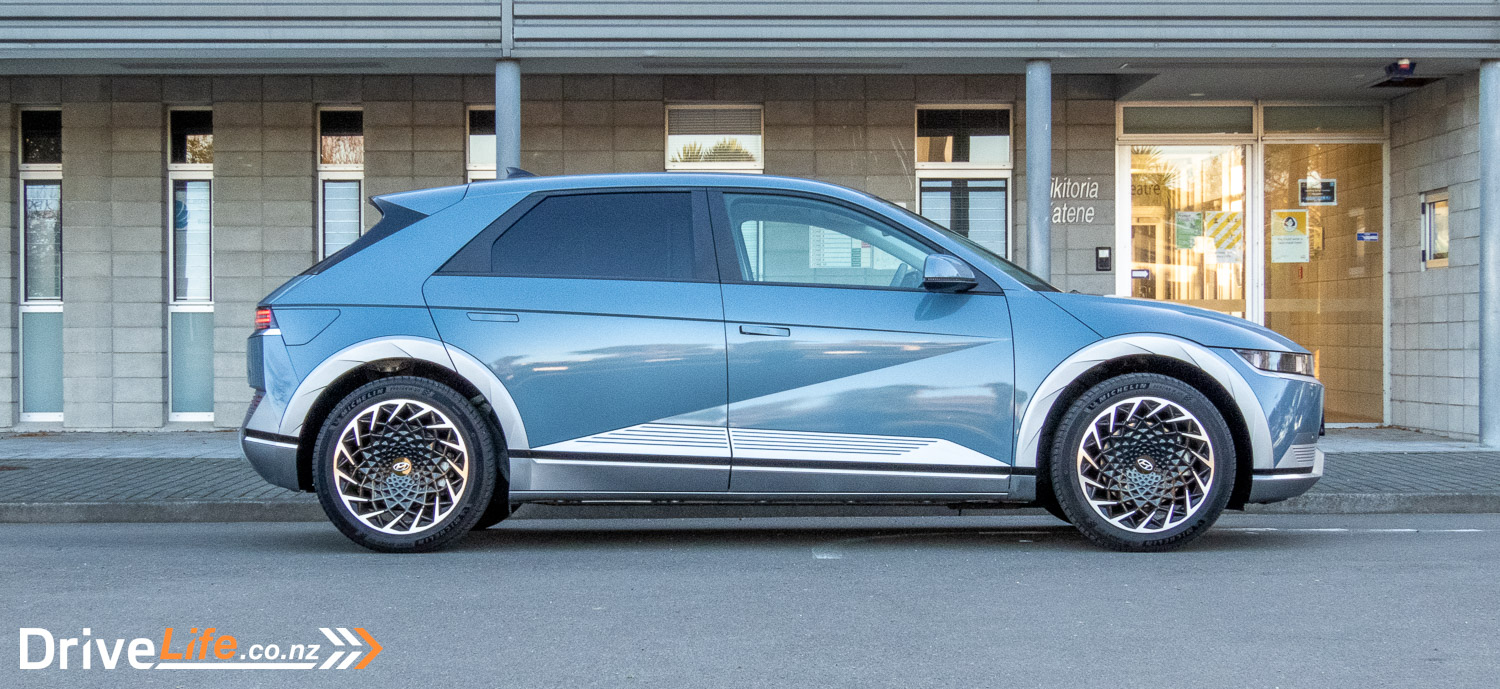
First Impressions Of The 2022 Hyundai Ioniq 5 Elite
I’ll admit, this isn’t my first rodeo with the Hyundai Ioniq 5. We all tested one last year as part of New Zealand’s COTY. When I first saw the Ioniq 5 in the flesh, I had conflicting feelings.
On the one hand, I loved the cyber-punk aesthetics. It looked as if it’d been plucked out straight out of a video game. I also enjoyed the idea that this would be the design template for future Hyundais built on the same platform. But on the other hand, the Ioniq 5’s edgy design just didn’t suit its bulky SUV proportions.
I remember thinking if the Ioniq 5 had smaller hatchback proportions, it would be an absolute stunner.
So, what do I think now? Well, I’d say it’s a similar story, but my feelings have moderated in the Ioniq’s favour. I appreciate the striking design a lot more, despite the size. And heck, it’s much better looking than most SUVs out there.
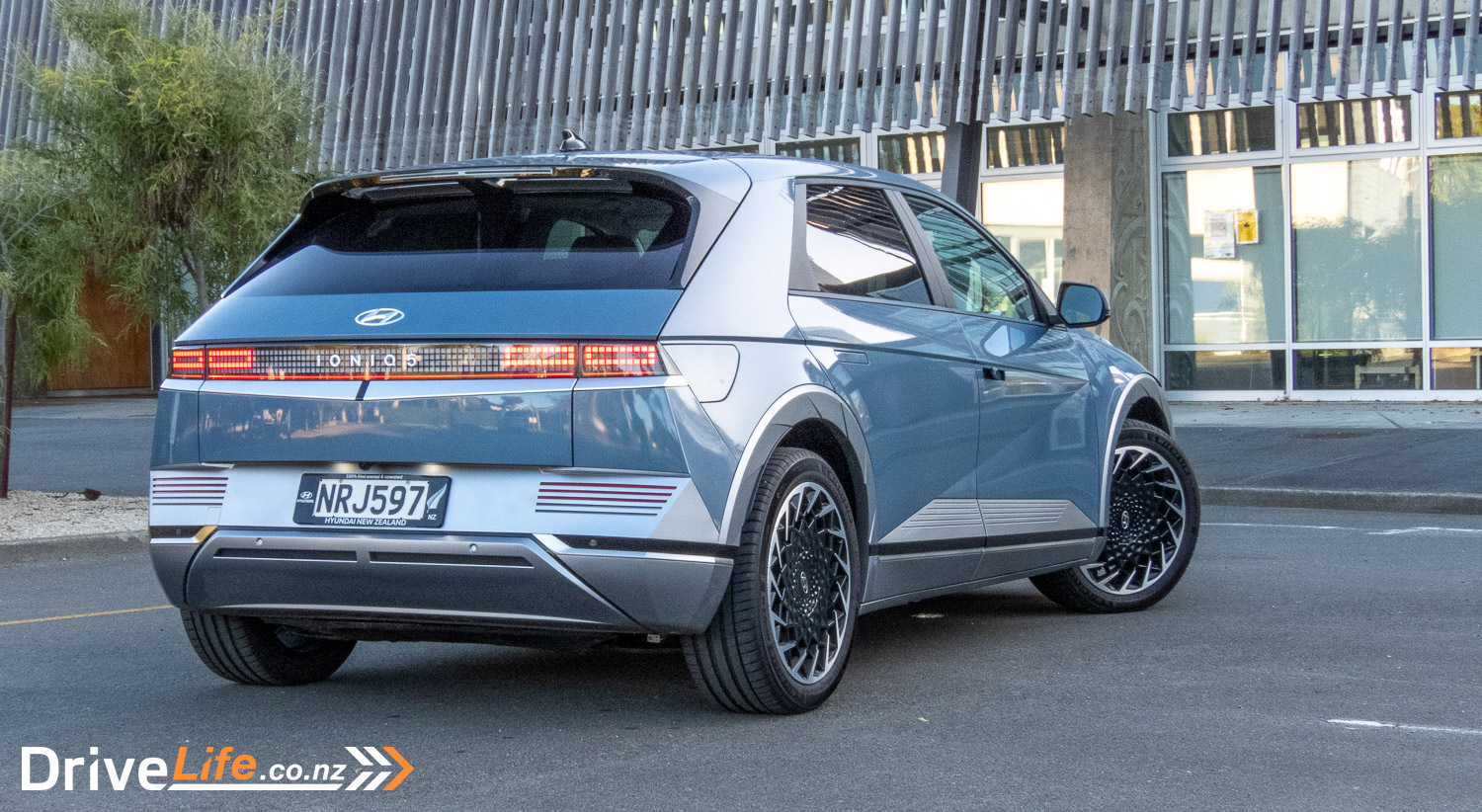
What’s The Interior Like In The 2022 Hyundai Ioniq 5 Elite?
We’ve already covered the interior extensively in our review of the Ioniq 5 Limited. Click here to see more.
Compared with the outside, the Ioniq 5 does a personality one-eighty once you’re on the inside. The edgy, avant-garde exterior design transitions into modern minimalism. There’s a certain calmness to the space, a Korean Cool, if you will.
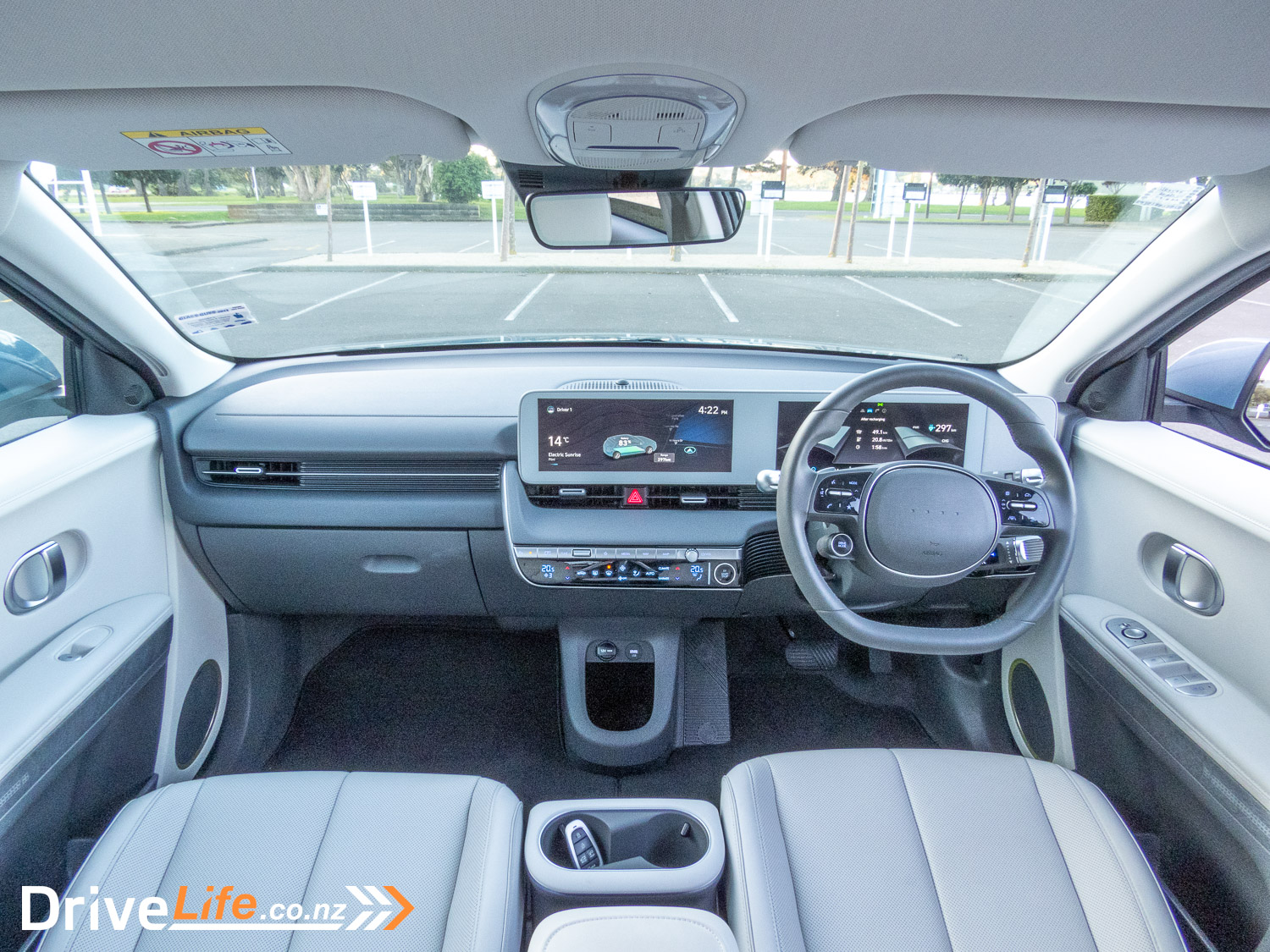
Inside, it’s light and airy with acres of white and soft grey textures. The textures are high quality and the build quality is something you’d expect from one of the German marques.
Make no mistake, this interior is seriously impressive.
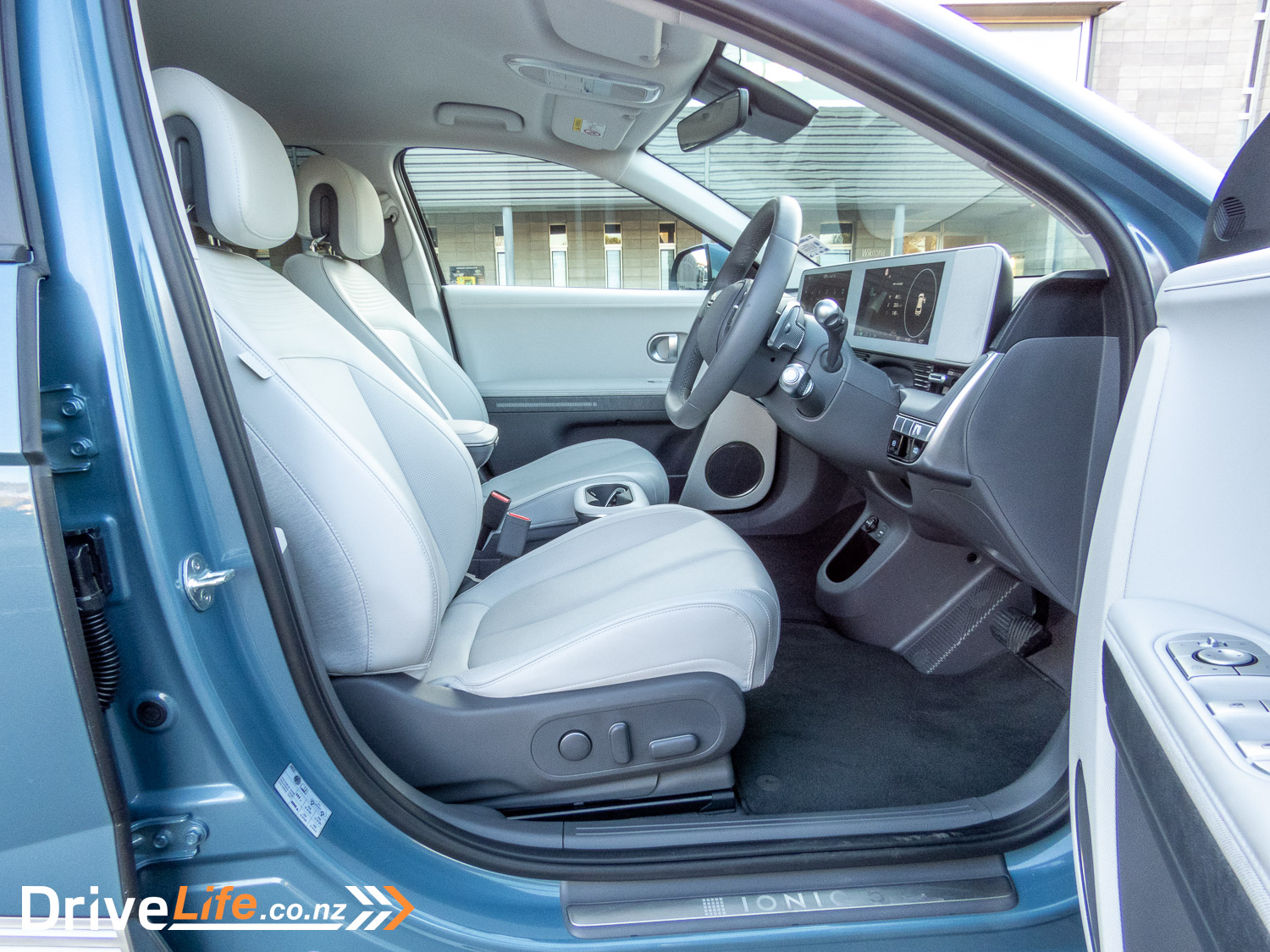
The new platform is also a blueprint for Hyundai to showcase some of the design advantages of an EV. Between the skateboard platform and the long wheelbase, the inside is essentially a flat-floored rectangle.
The cabin feels incredibly spacious, and it allows Hyundai to play around with some novel storage ideas like the ‘Universal Island’. It’s an open centre console, with deep storage, a wireless phone charger and it can be moved back and forth along the floor.
This said, I’m not sure Hyundai has quite worked out all of the storage solutions. For example, the front cubby isn’t within easy reach of anybody, and that open console doesn’t stop your items rolling around nor does it provide any visual security.
Up in front is the Ioniq 5’s dual-screen infotainment and dash-cluster combination. Both screens have sharp resolution and on-screen graphics. The user interface of the infotainment is broadly similar to what’s already in other Hyundai vehicles, but is a good thing. It’s intuitive and uncluttered.
The Ioniq 5’s minimalist aesthetic has seen several controls digitised, yet despite the tech-bloat, the system seldom lags. If there’s any downside, the stereo defaults to Hyundai programmed “Sounds of Nature”, rather than remembering your last stereo setting.
The dash-cluster graphics will vary based on your selected driving mode. Short of that, there’s not a great level of configurability to the display.
Our Elite trim level adds an 8-speaker Bose audio system with a sub. Out-of-the-box, the soundscape is quite flat. You’ll want to fiddle with the on-board equaliser to get the best from it. It’s not too shabby once you’ve tuned it right.
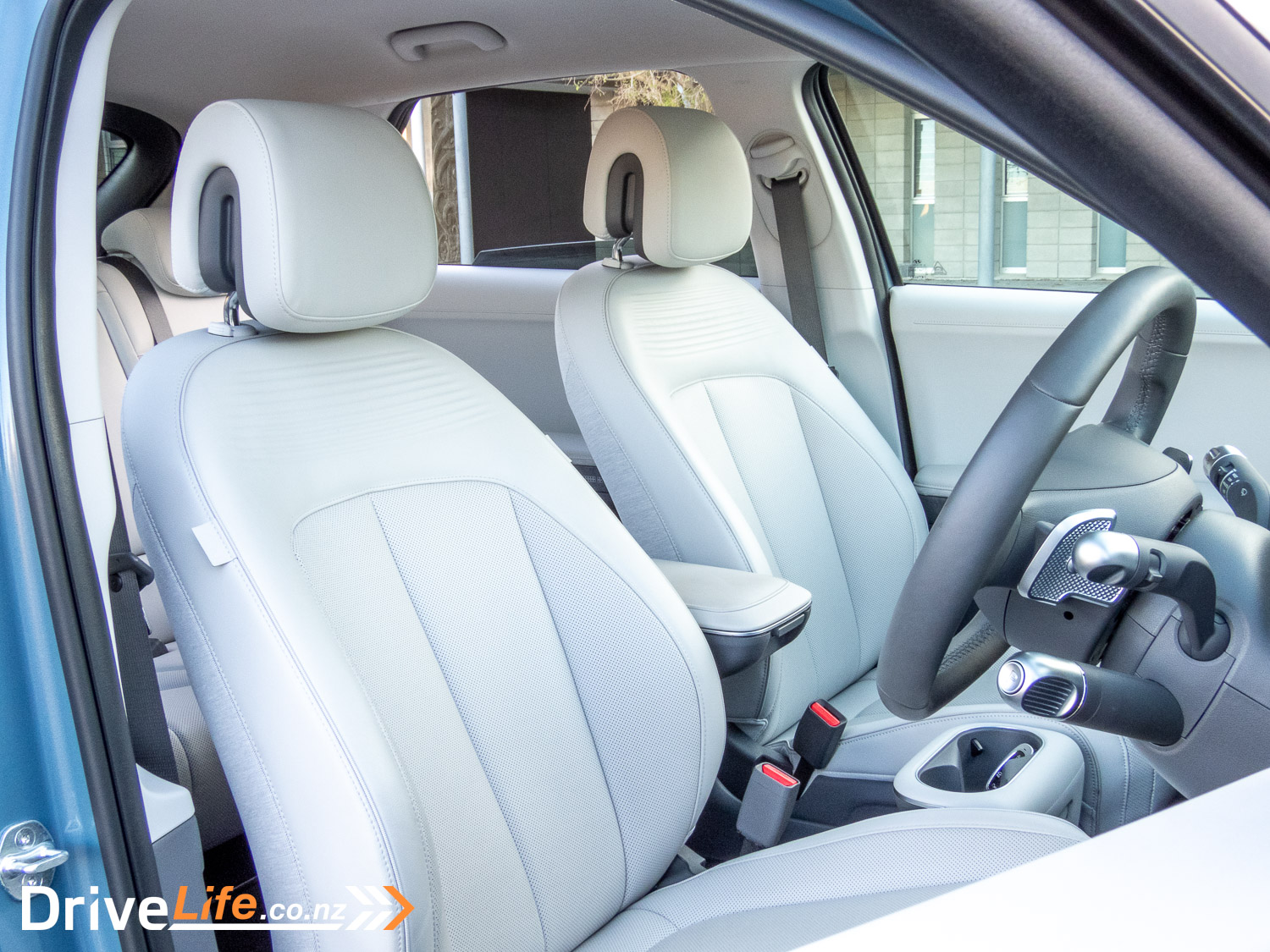
If you’ve already seen the brochure, you might have seen the impressive-looking front recliner seats offered in the flagship Ioniq 5 Limited. However, this is exclusive to the Limited variant. It’s also probably a hidden blessing for the rest of the range. In our experience, the shoulder bolstering on the top half of the recliner seats is too narrow. It feels like there’s something subtly pressing your shoulder blades in, making them uncomfortable on longer journeys. Although the seat design is much the same in the Elite, I didn’t notice it to the same extent as I did when testing the Limited.
In the process of creating a minimalist interior, Hyundai did digitise the front heated seat (and steering wheel) controls, hiding them behind a few menus. I suppose it was a good call given the execution, but they are a faff to adjust on the fly.
Rear seat passengers enjoy an abundance of legroom and headroom. In the Elite, the outboard passengers have heated seats, but miss out on full electric adjustment and the rear window blinds which come standard in the Limited. To switch-on the rear heated seats there is a high-quality metal rocker switch on the armrest, resting right at your fingertips. It’s a much simpler operation compared with the front seats.
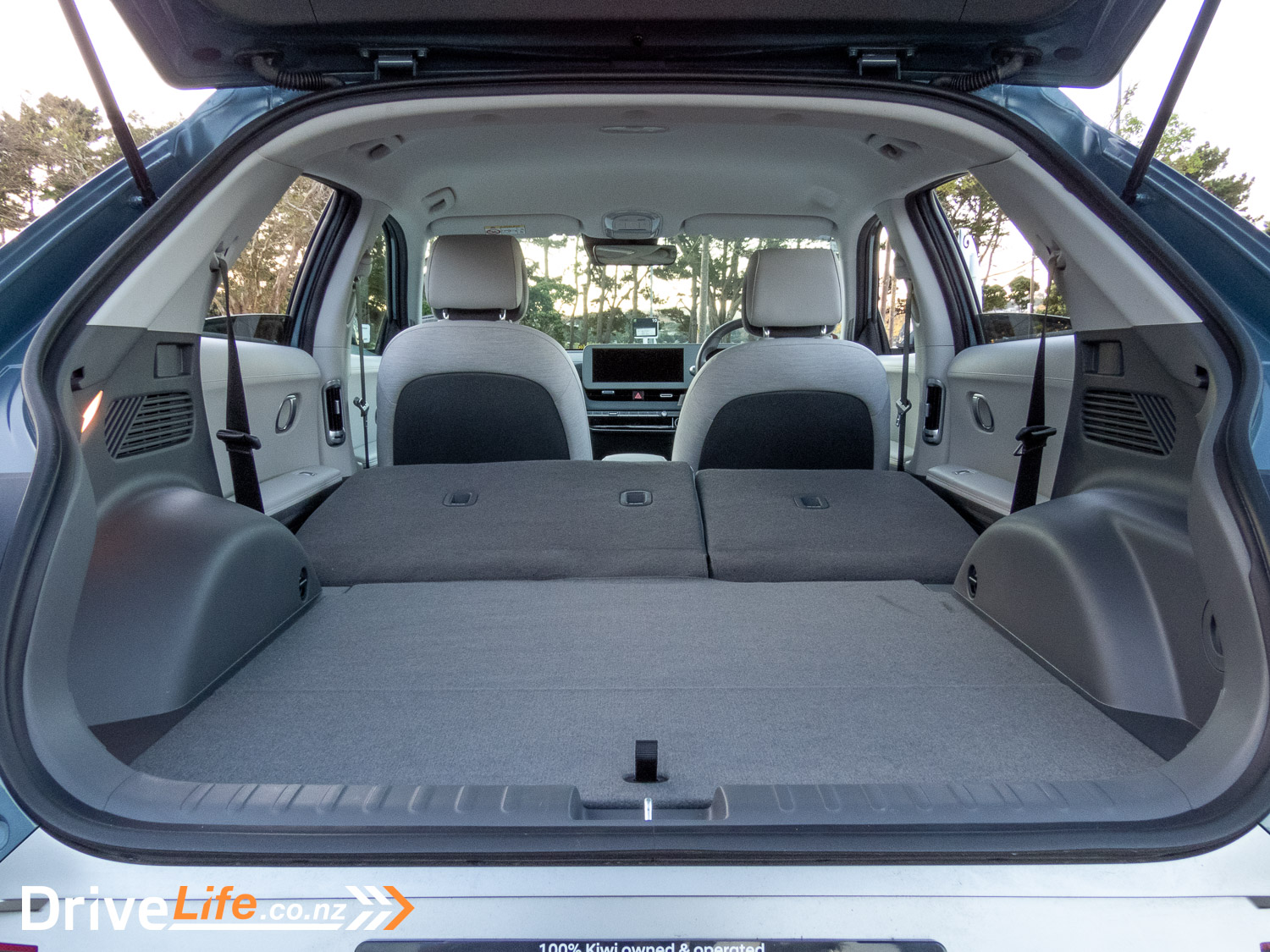
The Ioniq 5’s boot is a sizable 537 litres and despite the Ioniq 5’s tapering roof-line, the space is all very usable. There’s shallow storage under the boot floor, taken up mostly by the stereo subwoofer. That said, you’ll still be able to pack charging cables and the tyre pump in there – no full-size or space saver spare on the Ioniq 5, unfortunately.
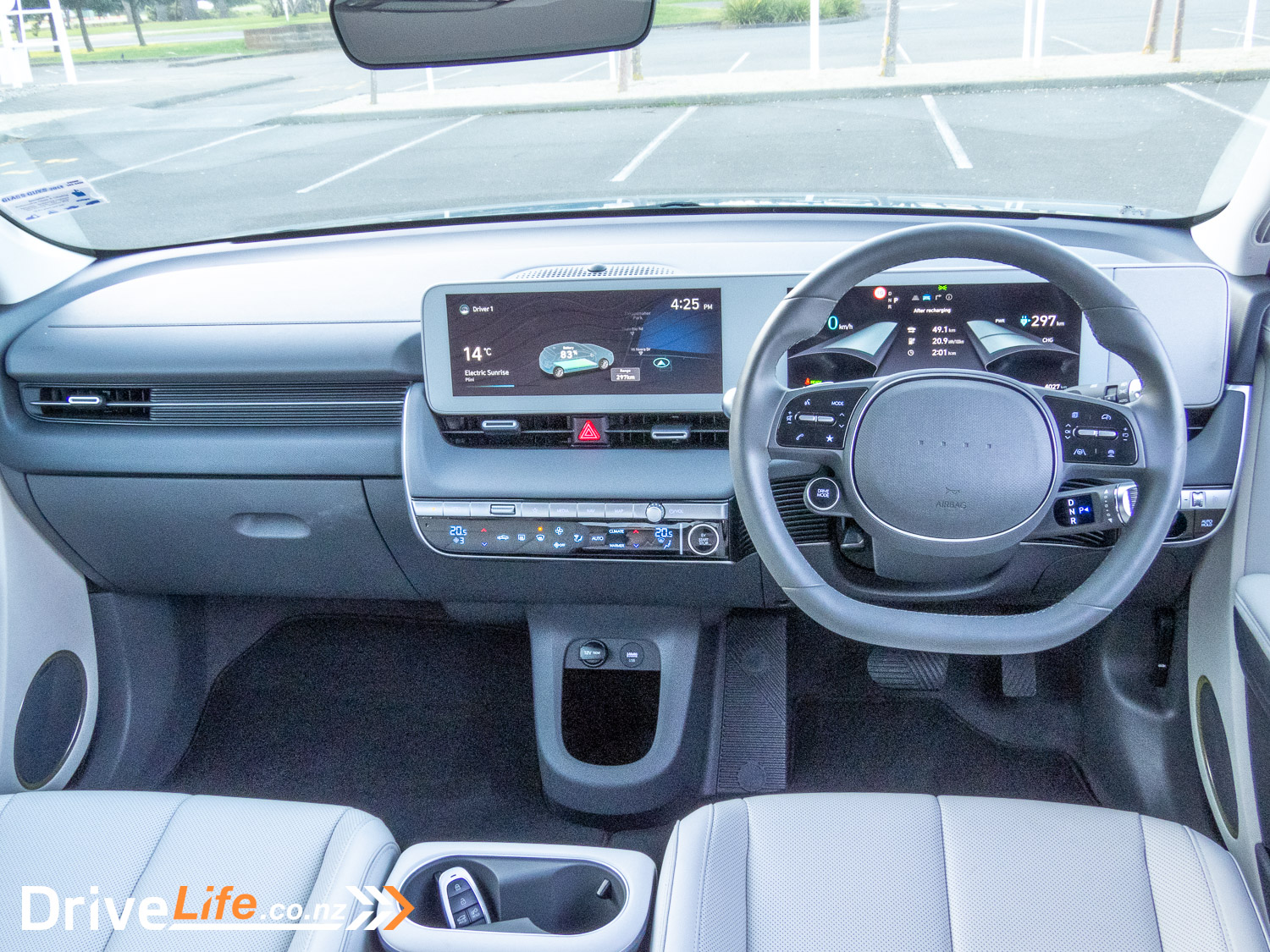
What’s The 2022 Hyundai Ioniq 5 Elite Like To Drive?
New vehicle platforms cost a Manufacturer an absolute bomb to develop, though they form the underpinnings of an entirely new range of vehicles. New vehicle platforms can be quite exciting for us car nerds, as it signals what is to come from that brand.
The Ioniq 5 is built on an all-new, electric vehicle architecture. Hyundai calls it E-GMP and they’re using it to build several fully-electric models, including the Kia EV6 and the yet-to-arrive Genesis GV-70. As mentioned in the Range section, the Ioniq 5 is already being offered with a variety of battery and motor configurations.
So, what’s underneath this Ioniq 5 Elite? Powering our Ioniq 5 is a single rear-mounted permanent synchronous magnet motor producing 160kW of power and 350Nm of torque. Our test vehicle uses a water-cooled 72kWh battery pack, meaning that range is good for a claimed 481 kilometres.
The Ioniq 5 Limited we drove last year was AWD, meaning it had an additional 70kW/255Nm of performance courtesy of another electric motor at the front.
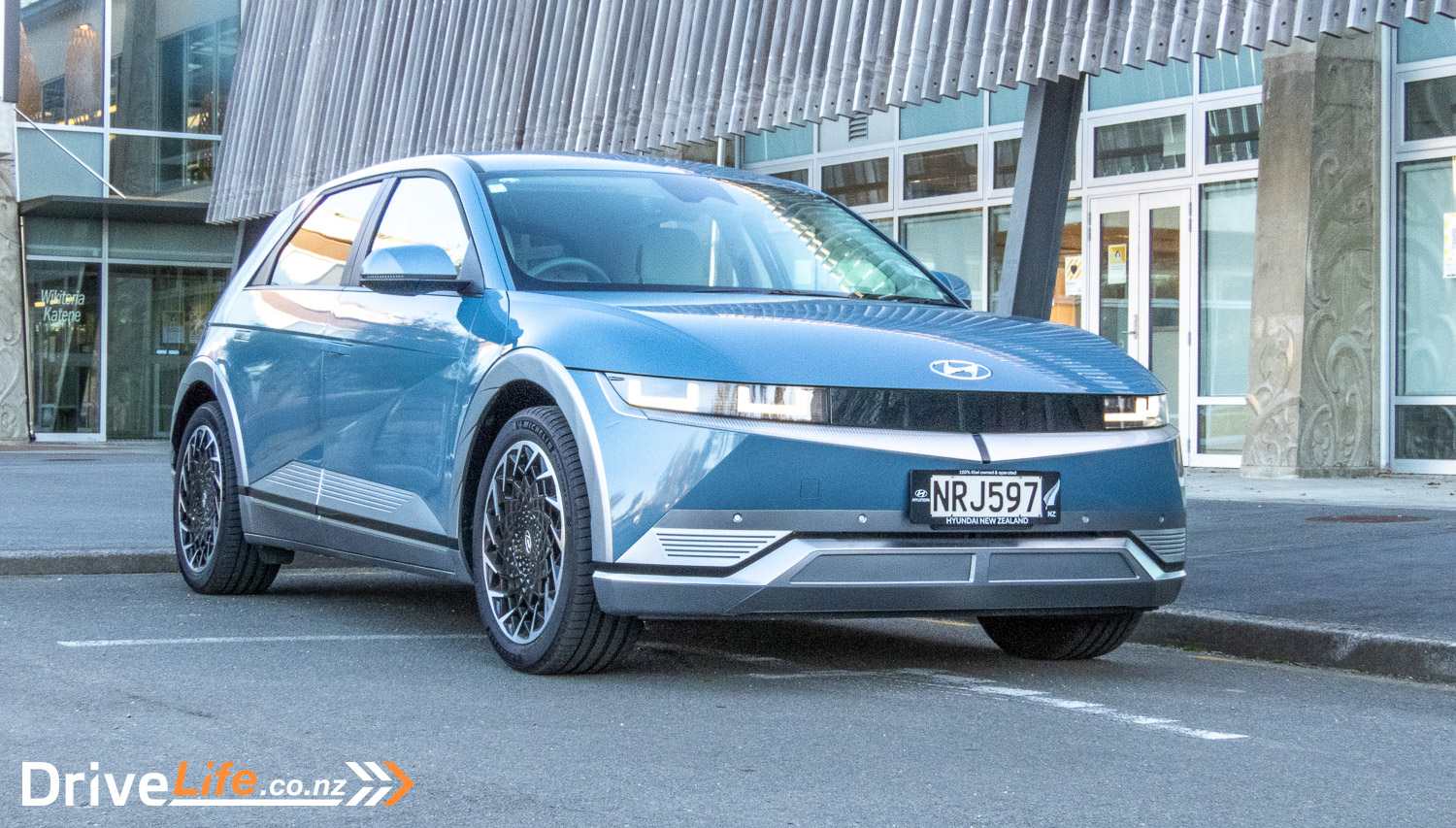
Compared with the twin-motor layout of the Ioniq 5 Limited, our single-motor Ioniq 5 is considerably slower. All EV’s do the instant torque thing, but as expected, the single-motor isn’t as snappy as the twin-motor off-the-line, nor does it continue to pull as hard once you’re moving. But in the overall scheme of things, it’s not sluggish. The single-motor’s acceleration and power delivery is tamer and more progressive as a result. It’s a level of performance which wouldn’t be too dissimilar to what many modern ICE-powered crossover drivers would be used to. On-the-whole, the performance is adequate. It’s quick off the mark, pulls solidly, and has enough juice left for a safe open road passing manoeuvre.
If you are passing, you’ll want to drop the Ioniq 5 into Sport mode, one of the Ioniq 5’s three driving modes. Sport mode minimises the friction from the regenerative brakes and gives you the best performance from the motors. Eco mode is the opposite, applying plenty of regenerative braking friction and blunting the accelerator inputs. It can make the Ioniq 5 feel rather sluggish. Normal mode is the default of the Ioniq 5, and is a comfortable in-between of Sport and Eco. We’d say the majority of our driving was in Normal mode.
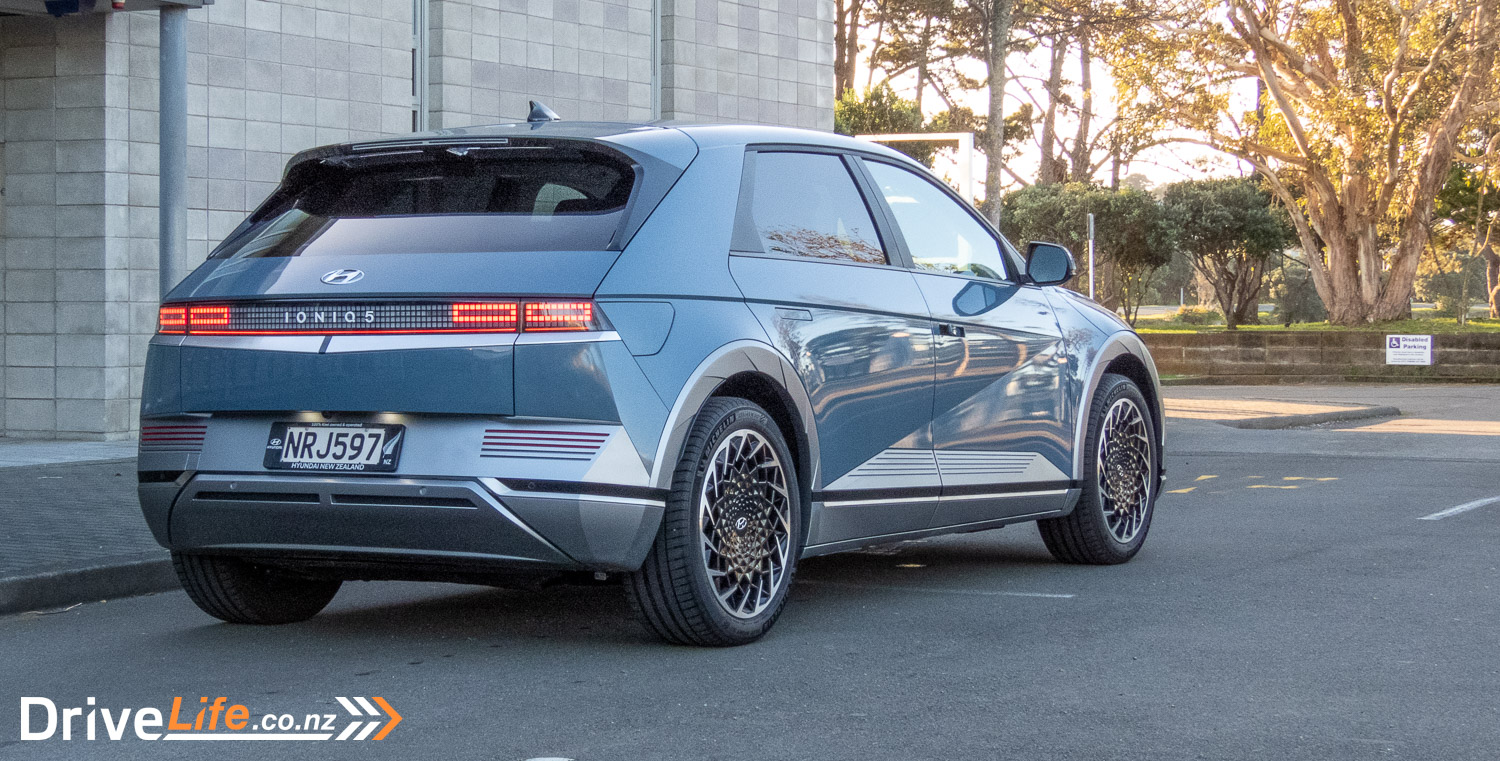
On the subject of regenerative braking, the Ioniq 5 has four levels of regenerative braking, which can be adjusted via the steering wheel paddles. The levels start from 0 (which is essentially coasting) and go up to 3 (heavy re-gen). If you pull the left-hand paddle again once you’ve reached re-gen level 3, the car will switch into iPedal mode. This mode essentially gives you one-pedal driving, and will bring the Ioniq 5 to a complete stop in a prompt, but progressive manner. It works exceptionally well, only requiring braking intervention on an infrequent occasion, usually when going down a steep hill.
While straight-line performance is certainly exciting the first few times you experience it, it’s not really the reason you’d consider an Ioniq 5. Instead, the Ioniq 5 prioritises comfort.
It’s all the better for it too, because riding in the Ioniq 5 is a serene experience. The ride quality is superb in the city and on the open road. The cabin is well insulated from outside noise, particularly from wind and tyre noise, easily making it one of the quietest EV’s I’ve driven.
You might be thinking such ambiance would be rudely interrupted when you approach some corners, but you’d be wrong. The Ioniq 5 is surprisingly capable in the twisty stuff.
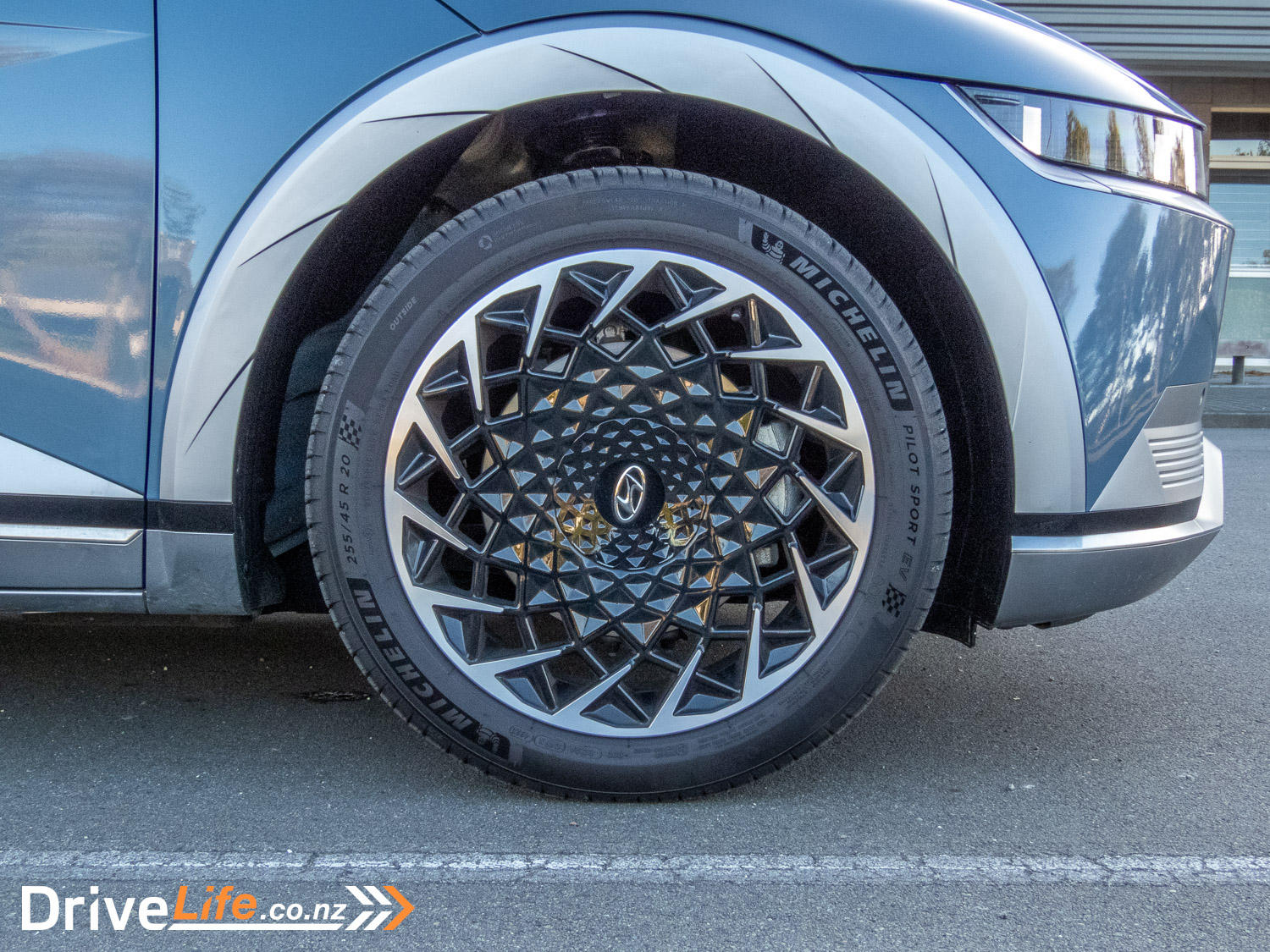
Grip levels are good, thanks largely to the Ioniq 5’s massive 255/45/20 Michelin Pilot Sport EV tyres. Combine this with excellent body control and the low centre of gravity from the skateboard-platform design, means the Ioniq 5 felt quite athletic going side-to-side. Sure, it’s not quite sports-car level performance, but it’s exceptionally competent for an SUV. More importantly, you can have some fun with it.
That said, the Ioniq 5’s near two-tonne weight is one reason I wouldn’t be tempted to limit seek frequently. The steering is also another reason you wouldn’t want to travel too quickly. Its feedback is a bit doughy, perfect for daily driving, but feels too vague for sustained fast stuff.
But I return to the ride quality, because it’s the Ioniq 5’s forte. And for this reason, having the dual motors isn’t really going to be of utility to most buyers if you’re spending most of that time in the city.
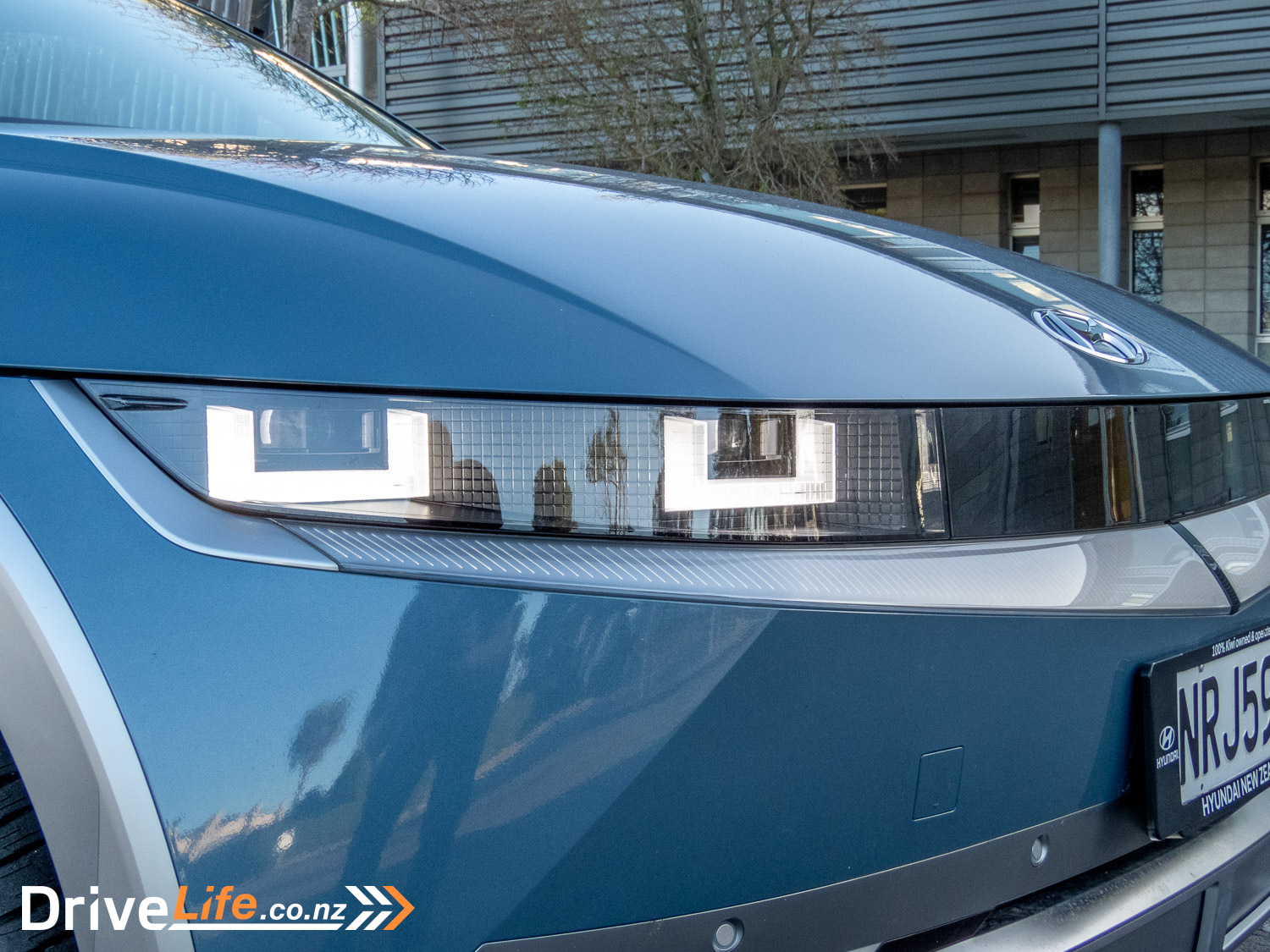
Speaking of city driving, the Ioniq 5 can be difficult to manage around town. Not because of the way it drives, but because the Ioniq 5 is WIDE. At 1890mm wide, the Ioniq 5 is wider than a Ford Ranger! I certainly was triple-checking my corners before entering an angle park.
As for the rest of the Ioniq 5’s footprint, it measures 4635mm in length and is 1600mm tall. Ignoring the width, the Ioniq 5 has a footprint similar to a Hyundai Tucson. Save for the wheelbase, which is 3,000mm or 235mm longer than a Hyundai Santa Fe.
For me, this is a slight disappointment. It’d be easier to manage the Ioniq 5’s width with some additional ground clearance. Instead, you’re basically at the same level as every other crossover driver on the road.
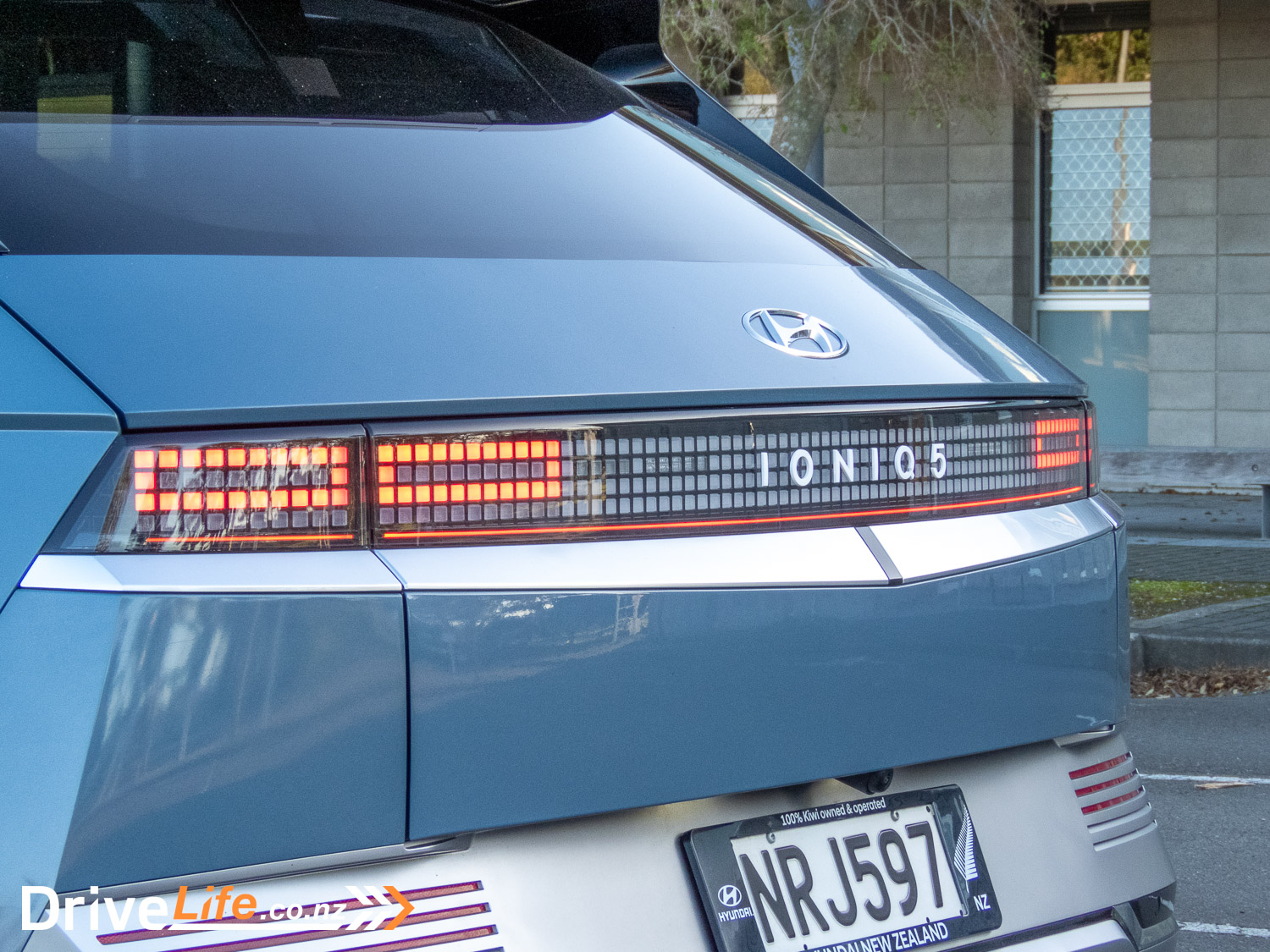
Energy consumption and charging times are inevitable talking points when discussing any EV. During our test of the Ioniq 5, I managed an overall energy consumption result of 19.9kWh per 100kms, which is a reasonable way-off Hyundai’s own estimate of 16.8kWh per 100kms. However, most of my commute is on the motorway, which isn’t an environment that favours efficient energy usage in an EV. I did manage to drop the consumption into the low 14s on shorter journeys. Fred managed to get 17.0kWh during his test of the Ioniq 5 Limited, which was under Hyundai’s claimed figure of 19.0kWh for the Limited.
Overall, the energy efficiency will be strongly influenced by the type of driving, and how well you can optimise the regenerative braking settings. Particularly so, in a place like Wellington given our hilly geography.
As for charging times, an hour’s worth of charging at a 50kW DC station will take the battery from 10 to 80%. It’s also one of few EV’s which can support 350 kW DC charging. Hook up to one of these, the Ioniq 5 can charge from 10% to 80% in just 18 minutes. Like any EV with a large battery, plugging into a 3-pin wall socket isn’t going to serve you well. It’ll take around 37 hours to charge it fully this way.
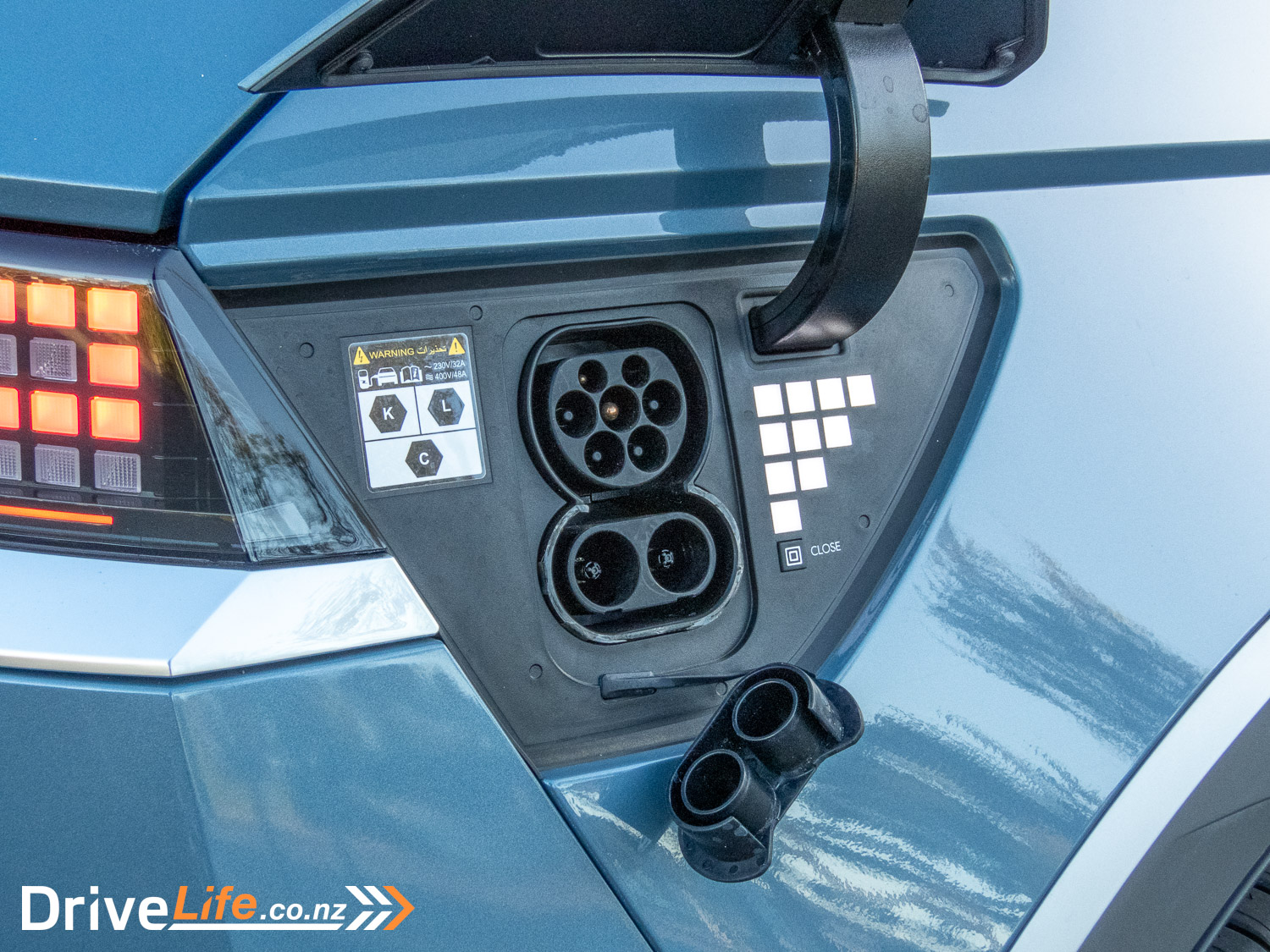
On the subject of charging capability, Hyundai’s EV’s support both 400V and 800V charging infrastructure without the need for additional components or adapters. The Ioniq 5 also features vehicle-to-load charging (V2L) which allows you to use the stored energy from the Ioniq 5 to recharge or power other electrical items, such as camping equipment. The V2L system can supply AC power of 230V/50 Hz which is the same as a standard wall socket, drawing a maximum of 3.6kW (or 15 Amps) of power consumption.
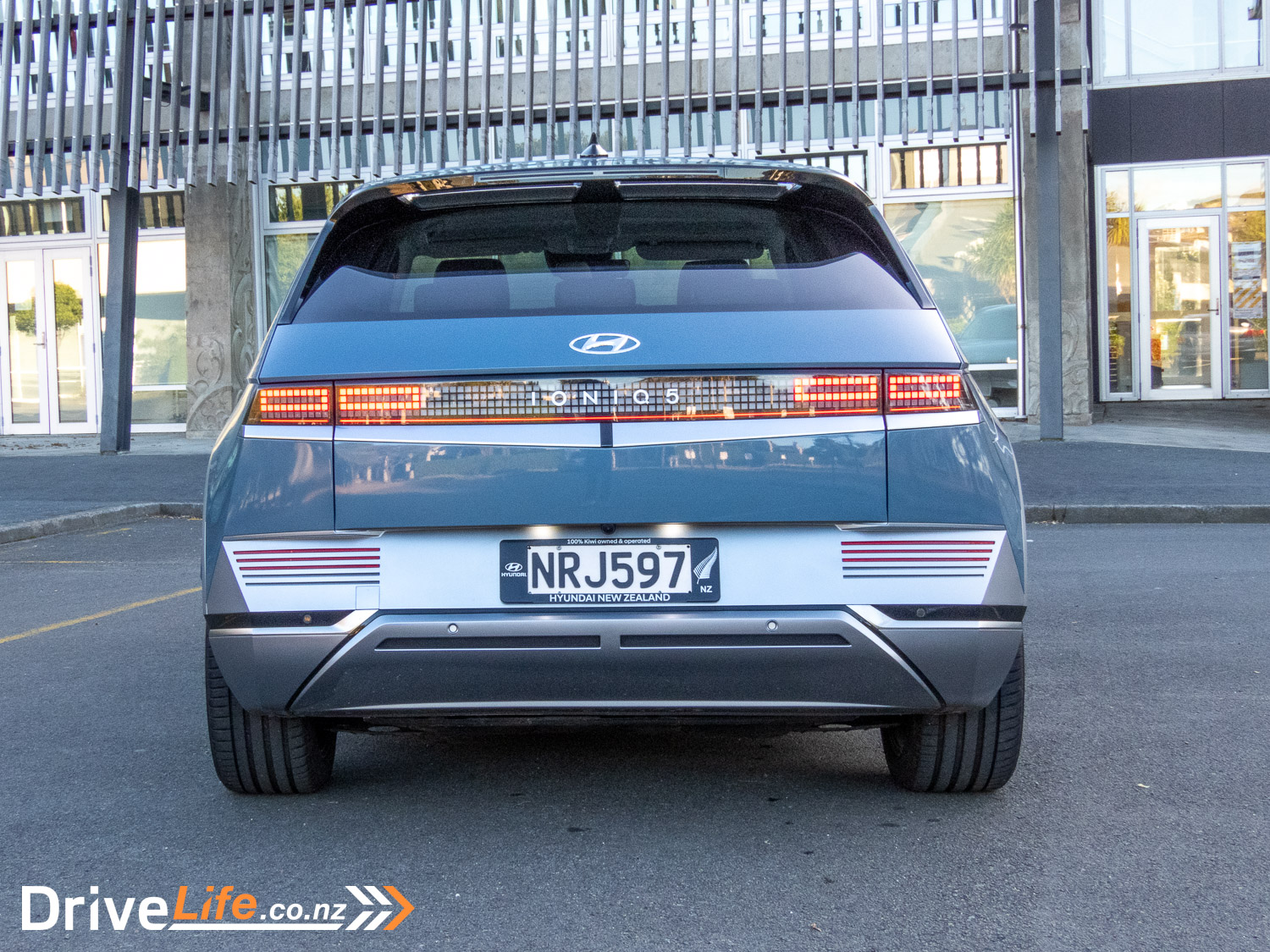
As we’d expect for a brand-new EV on a brand-new platform, the Ioniq 5 comes fully equipped with all the modern safety equipment. As is the standard from Hyundai, all of this equipment works near flawlessly. The Ioniq 5’s Adaptive Cruise Control is progressive and smooth, although Hyundai’s Lane Keep-Assistance systems (LFA and LVDA) work a tad too well for my liking. Other systems like traffic sign recognition and the high beam assist didn’t skip a beat.
Perhaps the only mark against the Ioniq 5 relates to the spec of our car. The Elite only has a single reversing camera, whereas the Limited gets a 360-degree around view camera. At $96,990, this seems like a stingy omission. Oh, and the Ioniq 5 doesn’t have a rear wiper either. But, in my opinion, it doesn’t really need one.
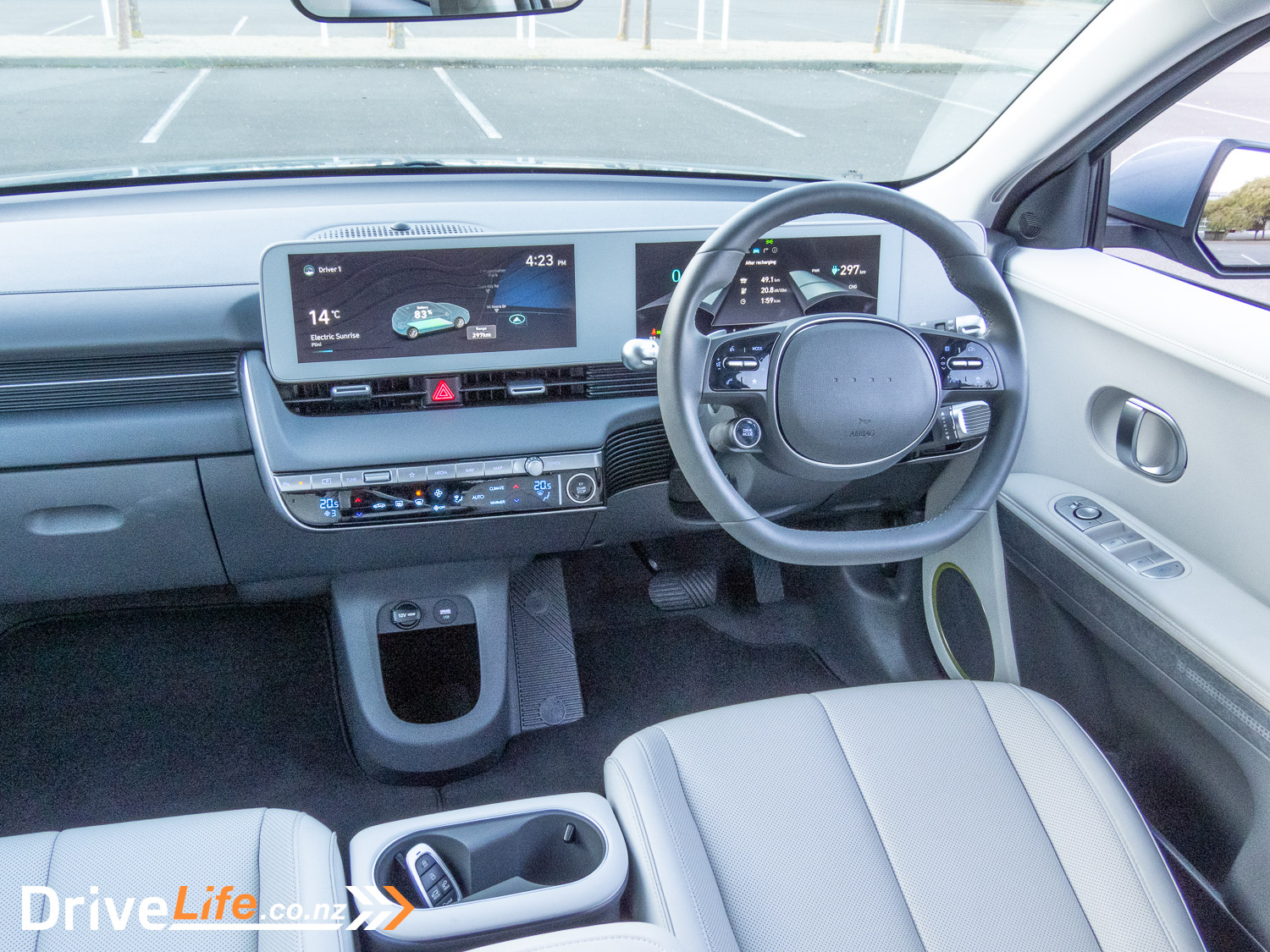
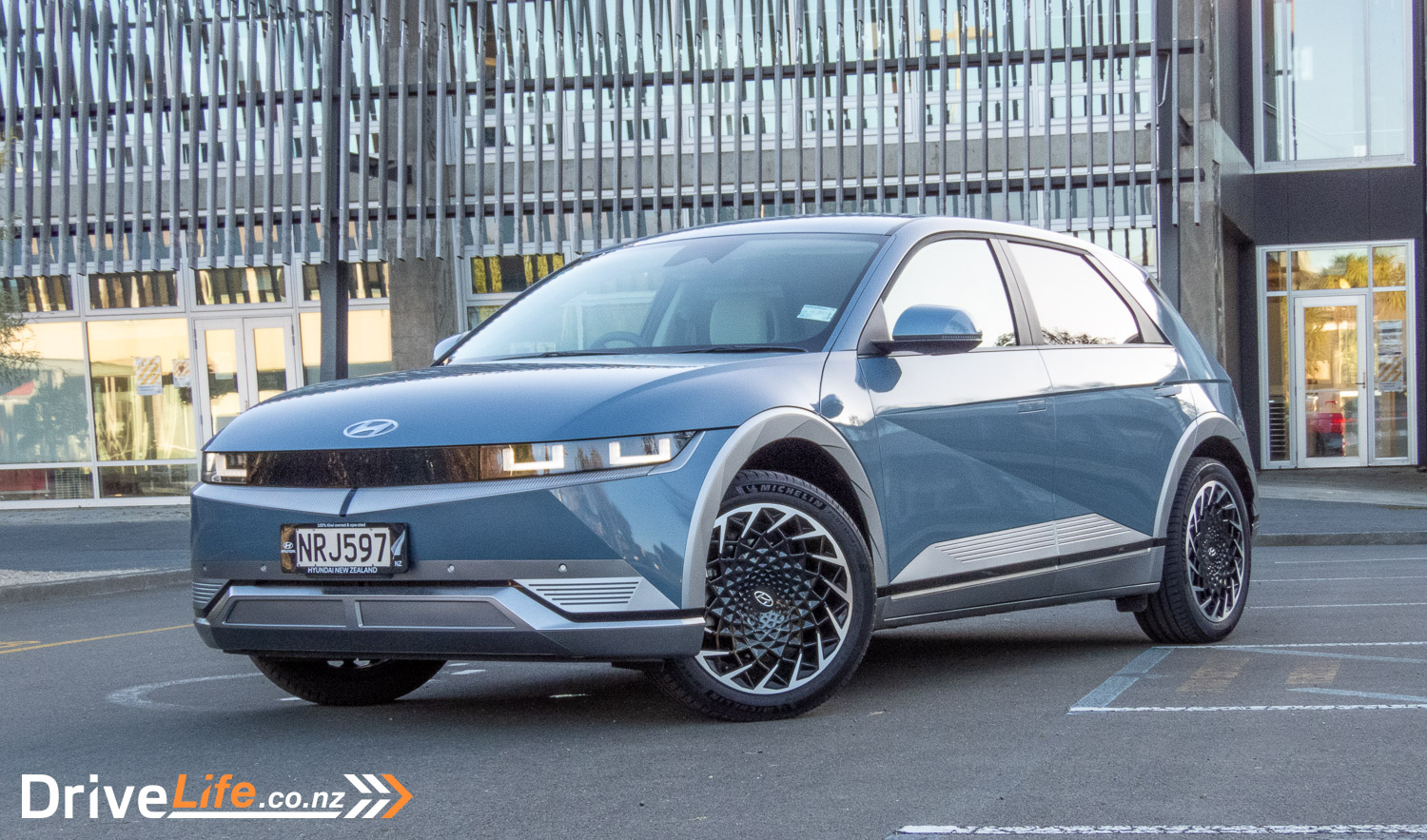
2022 Hyundai Ioniq 5 Elite Specifications
| Vehicle Type | 5-door Electric SUV |
| Starting Price | $96,990 |
| Price as Tested | $96,990 |
| Power, Torque kW/Nm | 160/350 |
| Spare Wheel | None |
| Kerb Weight, Kg | 1,910 |
| Length x Width x Height mm | 4635x1890x1600 |
| Cargo Capacity Litres (seats up/seats down) | 537/1,587 Front trunk: 24 |
| Energy Economy, kWh/100km | Advertised Spec – Combined – 19.9 Real-World Test – Combined – 16.8 Low Usage: 6-10 / Medium Usage 10-19 / High Usage 19+ |
| Battery type | Lithium-ion polymer with water cooling |
| Towing Capacity Kg, unbraked/braked | 750/1,600 |
| Turning circle metres | 12.0 Small: 6-10m / Medium 10-12m / Large 12m+ |
| Warranty | 10 year / 200,000 km anti perforation corrosion body warranty 3 year / 100,000 km mechanical warranty 3 year / 100,000 km roadside assistance package 8 year / 160,000 km high voltage battery warranty |
| Safety information | ANCAP Rating – 5 stars Rightcar.govt.nz – 5 Stars |
Have you enjoyed this review? Be sure to join our monthly email newsletter list so you don’t miss a single car review!


